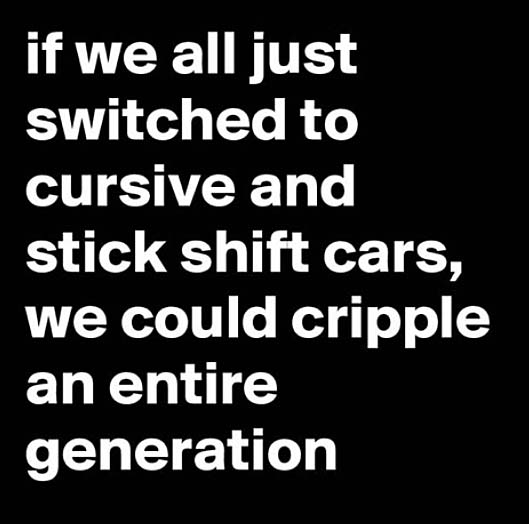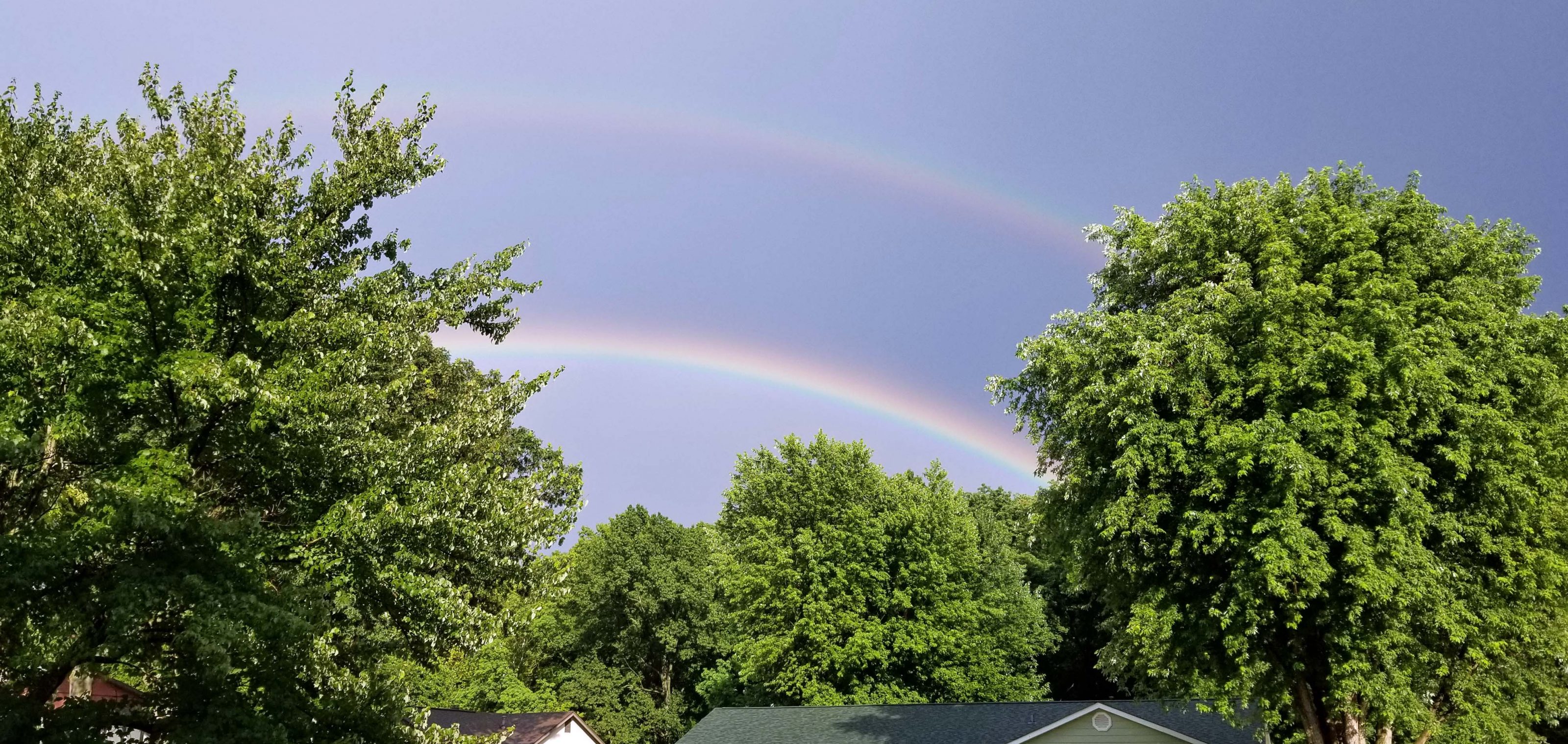
Rainbow


In preparation for the installation of our future hot tub, Ted and I are scheduling contractors and making a final decision about the placement of the hot tub. One of the questions we have is, “How far from the swimming pool does the hot tub have to be to meet the local building code?” I’ve learned that’s a complicated question, and I think I might have stumped the county building department staff.
I called the county government office and spoke with Christina. She told me I need to speak with the Planning and Zoning Department and transferred me to Karen. Karen told me that our property is zoned R1E, so I need to talk with someone in the Building and Codes Department. That person told me it’s not really a building code question; it’s a safety code question. She directed me to Patty, a Plan Reviewer, in the Safety Codes Department. Patty said she’s working from home, and the person to speak with is Todd, who works in the Code Enforcement Department. Todd didn’t answer his phone, so I left a message for him.
It’s been two business days and Todd hasn’t called me back, but I think the question might have become moot. After planting flags at each end of the patio to indicate the hot tub size, we decided to put it at the other end of the patio. In that area, the hot tub will be 11-12 feet from the swimming pool–surely a safe distance from the pool to keep people from climbing on the hot tub to jump over the pool fence so they can get hurt in the process or drown in the pool and and file a claim against our liability insurance.
Update: Now picture the hot tub here instead of there. The tree is saved from becoming mulch, but the bush on the left needs to be moved.
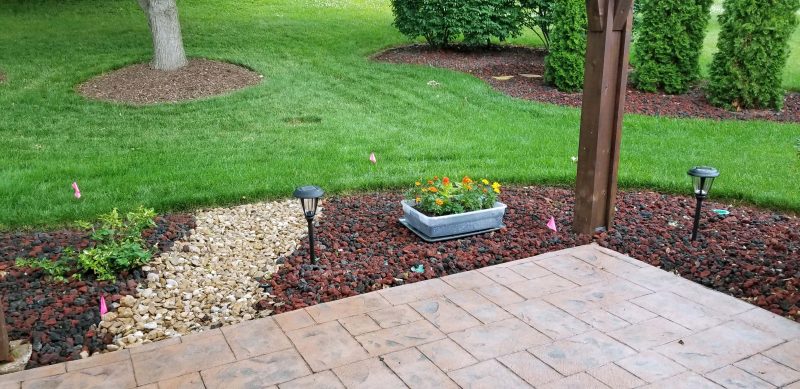
Thanks to COVID, I’ve now participated in my first drive-by birthday parade. My friend, Cindy, celebrated her 60th birthday with a parade arranged by her husband. My friend, Liz thought it would be a good idea for us to go together in my convertible–top down, of course. Riding together also gave us an opportunity to see each other in person for the first time since January 30.
The parade went around the block twice, honking horns, blowing noisemakers, etc. to celebrate Cindy’s coming of age. Liz is a very creative person and has what I call a “treasure chest” (i.e., closet) full of creative and playful goodies. She scrounged in the treasure chest and found pinwheels that spun as the car moved, plastic hand clappers that we could shake and rattle, a crown with sparkling cutout stars and streamers for Cindy to wear, and posterboard for a birthday sign. I brought a letter about two of my favorite memories of Cindy. I’m not creative like Liz, but I hunted up clipart and added speech balloons to tell the stories, and I put birthday stickers all over the envelope. Woo-eee!
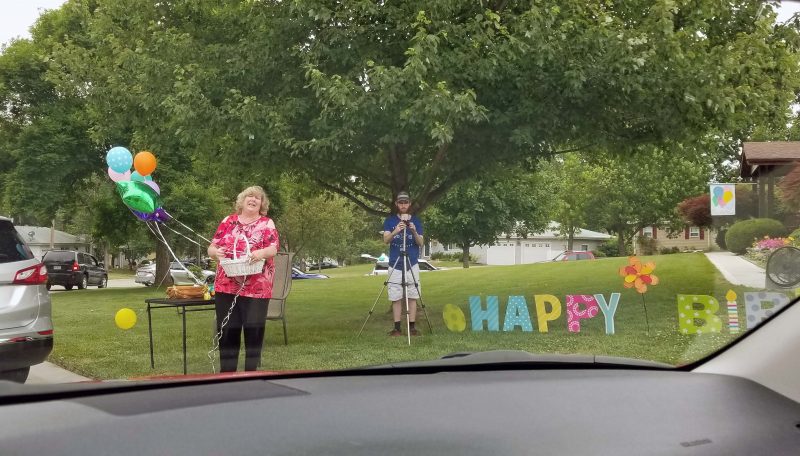

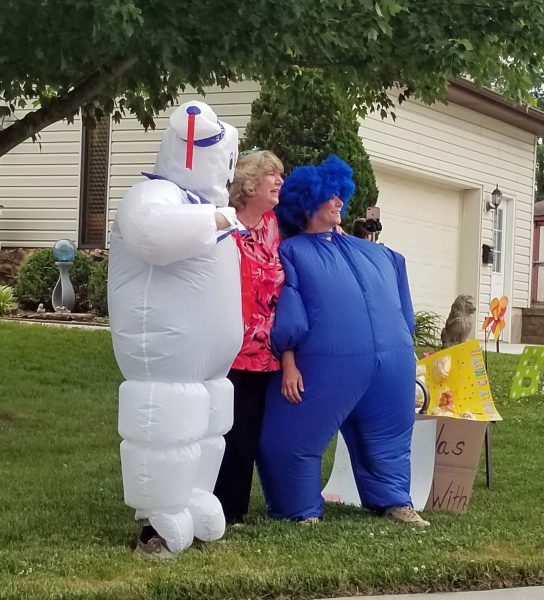
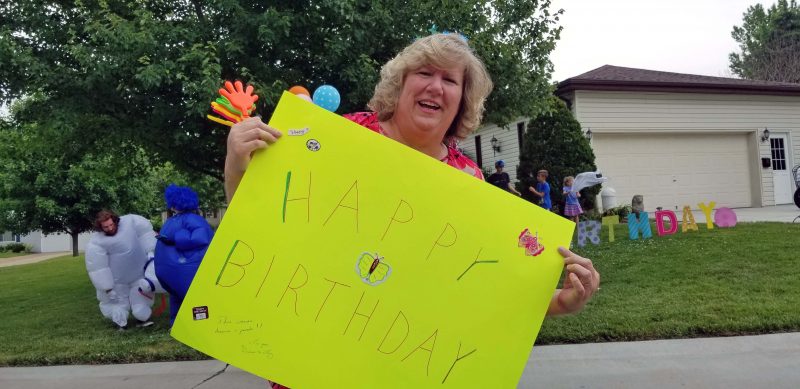
Thanks to my Aunt Ruth for sharing these cartoons with me.



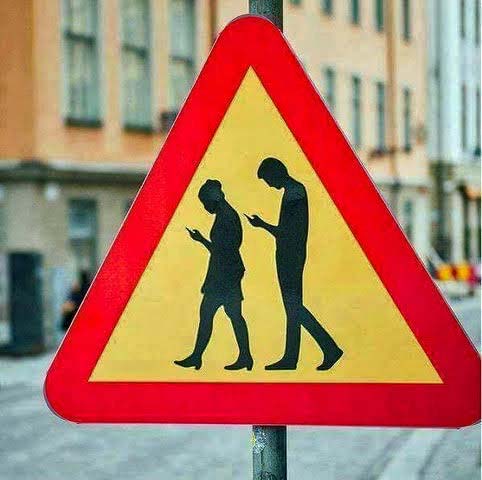
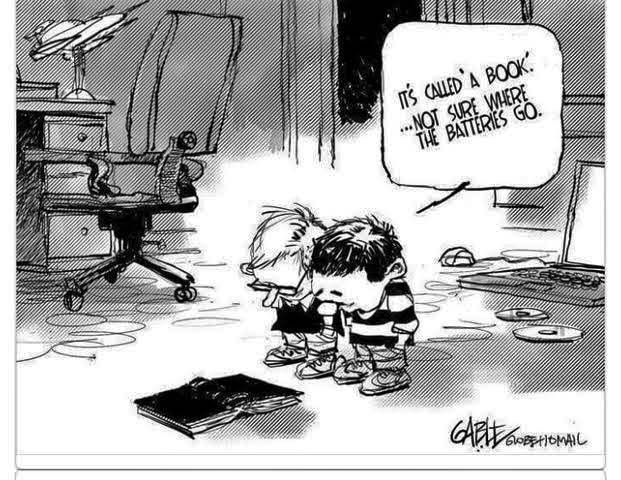
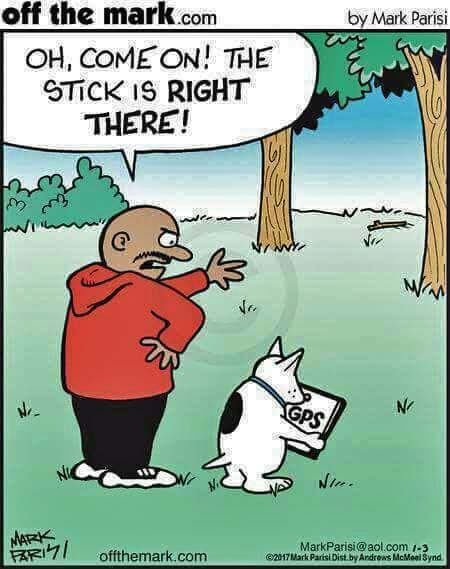

Not long after Ted and I moved to Missouri, we heard about Cuivre (pronounce that quiver) River State Park and its beach. After nearly five years in Washington, D.C. without a nearby lake for swimming, that sounded great. On a warm summer day, we packed up the kids (Jeff and Kathy) and headed for the park. Until we stepped into the water, it never occurred to us that the lake bottom would be anything but sand, like the glaciated lakes in Wisconsin. After being spoiled by growing up surrounded by sand-bottom lakes, walking on rocks and mud was not that much fun, so the Cuivre River beach was erased from our list of enjoyable destinations.
Today was the first time we’ve gone back to Cuivre River S.P. since that beach day–this time to hike. The weather was gorgeous–sunny, light breeze, mid-80s, and very low humidity (dew point of 54). We had a very nice hike and a chance to use our trekking poles, which we haven’t done since 2017. We enjoyed our hike so much, we will definitely go back again. There were probably around 50 people at the beach and swimming in the water, but we liked the hike better.

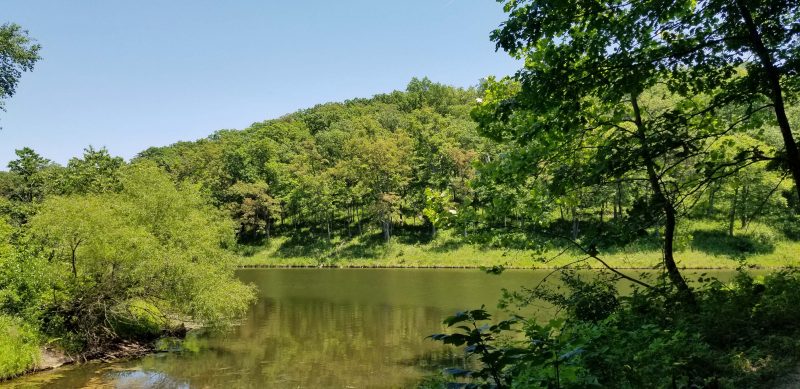

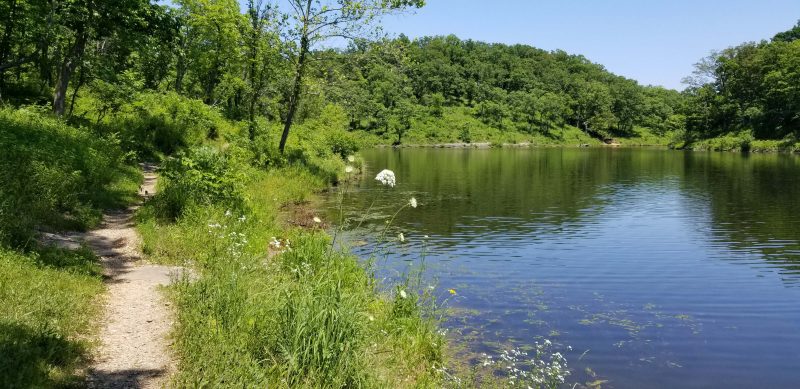


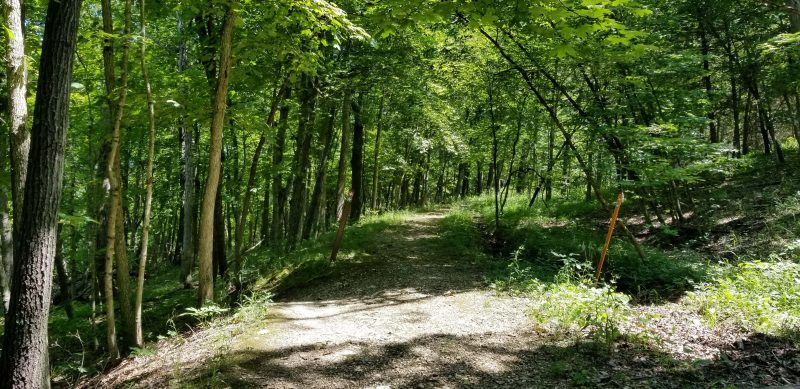
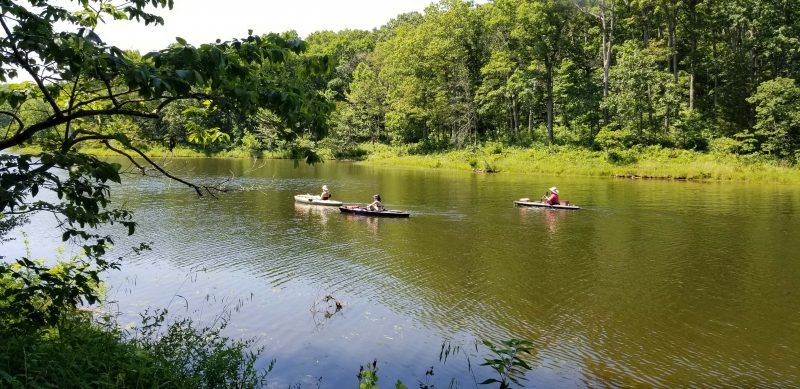
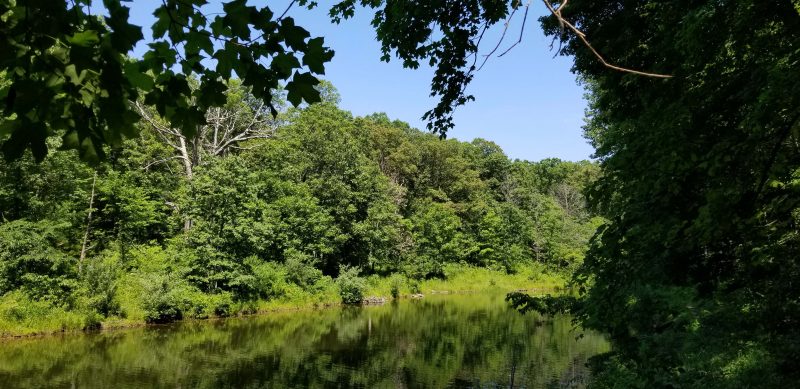
Today, Ted and I celebrated our 51st wedding anniversary. Last year, we celebrated with all of our children and grandchildren. This year, the celebration was more subdued.
We spent some time looking at our wedding album and enjoying the memories.
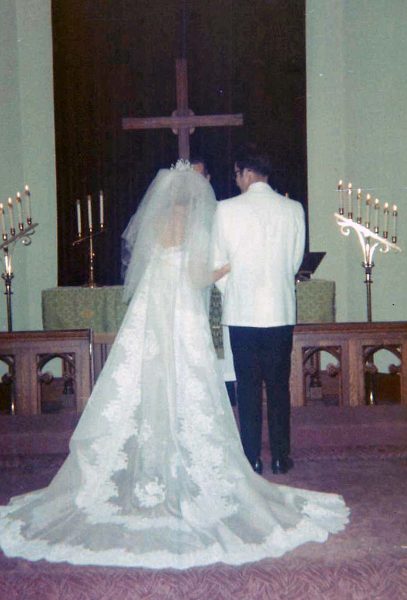
Our wedding cake was sour cream chocolate because neither of us likes white cake, the traditional wedding flavor.
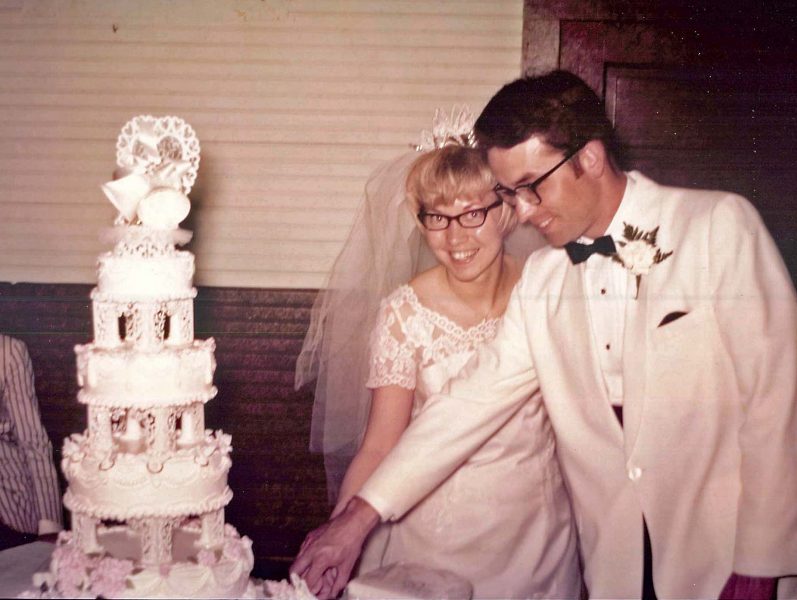
Our first dance was awkward. We had never danced together before the wedding, and Ted didn’t know how to lead. We’re better dancers now.
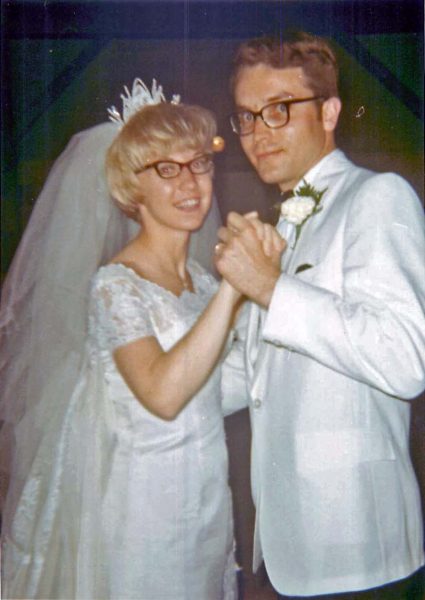
According to one of the four local newspapers that reported our wedding, I was a “Hingham girl” whom Ted “claimed.”
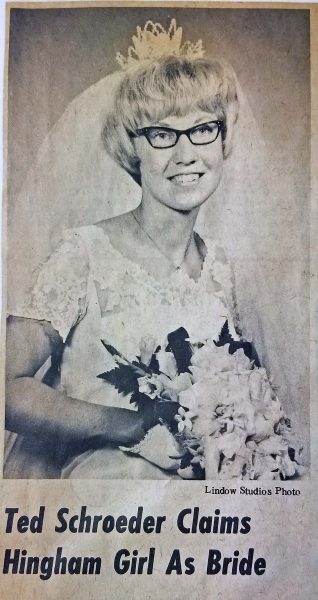
We had a star-studded guest list according to the guest sign-ins.

We started our anniversary celebration by buying a hot tub yesterday afternoon. Picture it here in 2-3 months, after the manufacturer catches up on production. The tree needs to disappear.
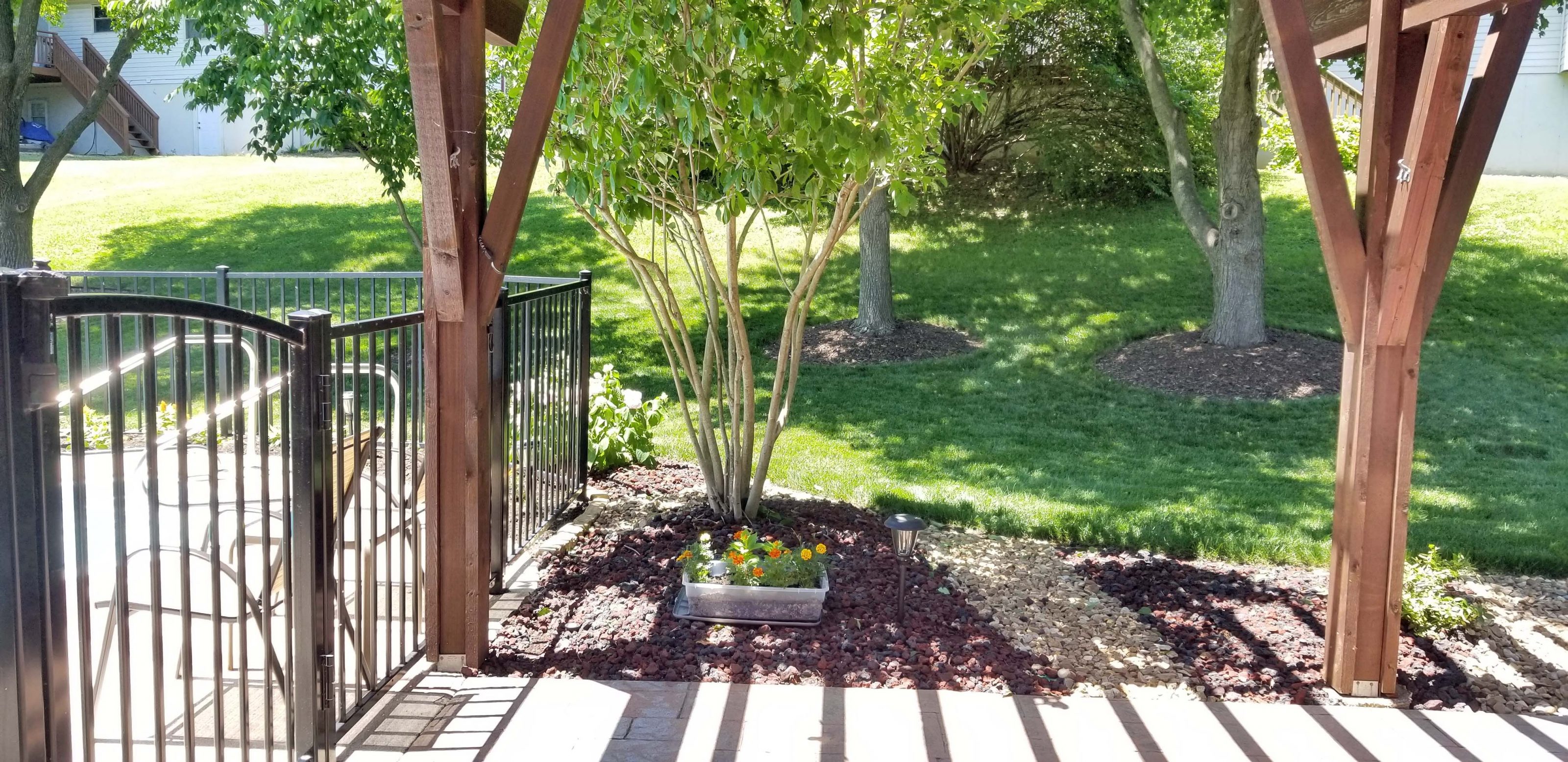
This afternoon, we rolled last year’s anniversary gift–our e-bikes–out of the garage and took a 12-mile bike ride in the beautiful weather. We’ve ridden over 300 miles so far this spring. (Plus the 365 miles we rode last year.) After the ride, we needed a dip in the pool to cool down.
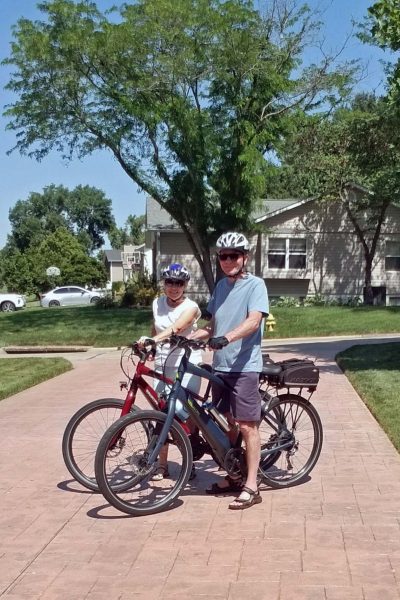
And, of course, we burned our anniversary candle. It’s an annual reminder of all the wonderful things we’ve shared since our wedding day.
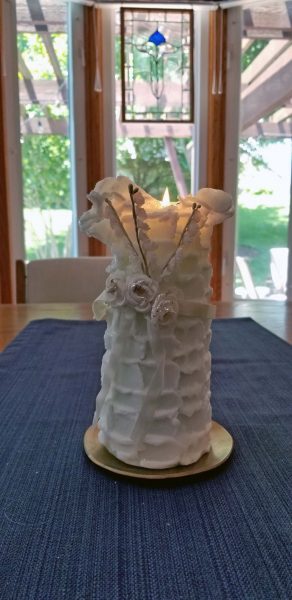

Ted and I have decided “Backyard.”
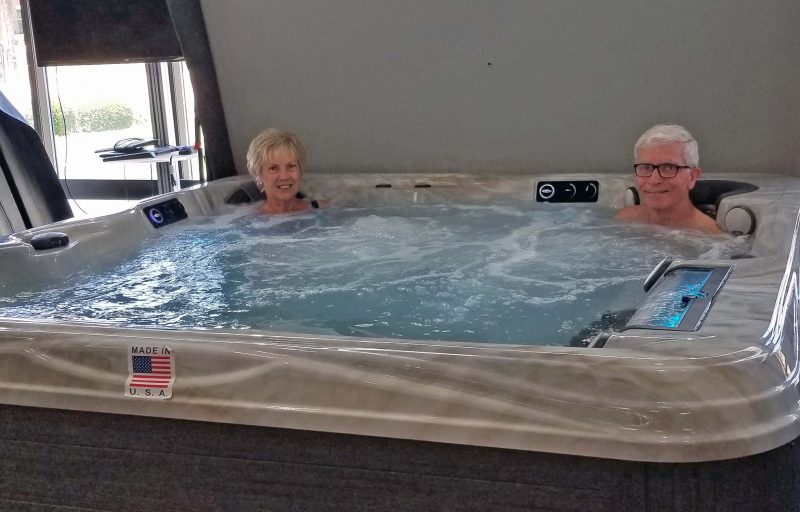
Last winter, we started talking about installing a hot tub in the spring. Then the COVID-19 pandemic hit the world and we decided that was too many contractors at the house–ground prep, concrete, electric, tub delivery, installation, etc.–so we put it off. Today we ordered our hot tub.
Hot tubs are in high demand, like bicycles and toilet paper, so we have to wait for the manufacturer to build our tub. If all goes well, the installation should be complete by late August or early September–just in time for cooler weather. We’re looking forward to the features we selected: two captain’s chairs (with individualized controls) plus four other seats (room for guests), lots and lots of jets, several motors to enable selection of specific jets, controls to adjust the intensity of the jets, a hydraulic-assisted cover that folds itself over the outer edge of the tub, a waterfall feature (lower corner of the photo) that’s part of the cleaning system, and a rainbow selection of lights that we were told “make the water glow in the dark.”
Fall has always been my least favorite season, but with a hot tub, I might have to adjust my opinion.
In 1992, the United States Postal Service offered Americans the opportunity to vote for the Elvis picture they preferred to see on a new commemorative stamp: “young Elvis” at the age of 19-20, or “old Elvis” as a Las Vegas entertainer. The voters chose “young Elvis” and the stamp was issued January 1, 1993 at Graceland with Priscilla Presley on hand for the unveiling. According to the National Postal Museum, this is the most popular commemorative stamp ever issued.

Another commemorative Elvis stamp was issued in August 2019 as the “Forever Elvis Collection.”
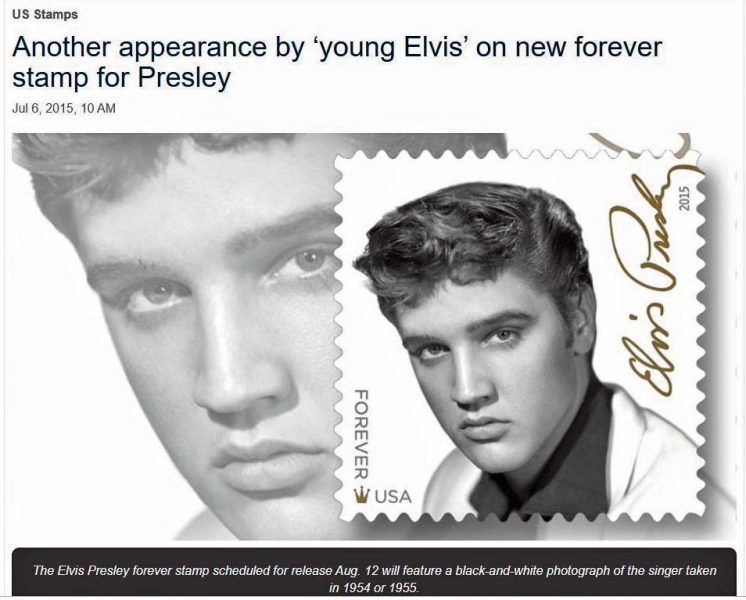
Guess who bought a set. The sheet of stamps is double-sided and printed to look like a 45 rpm record jacket. The front of the sheet represents the album cover and you can see the top of the “record” sticking out above the stamps on the back side of the sheet .
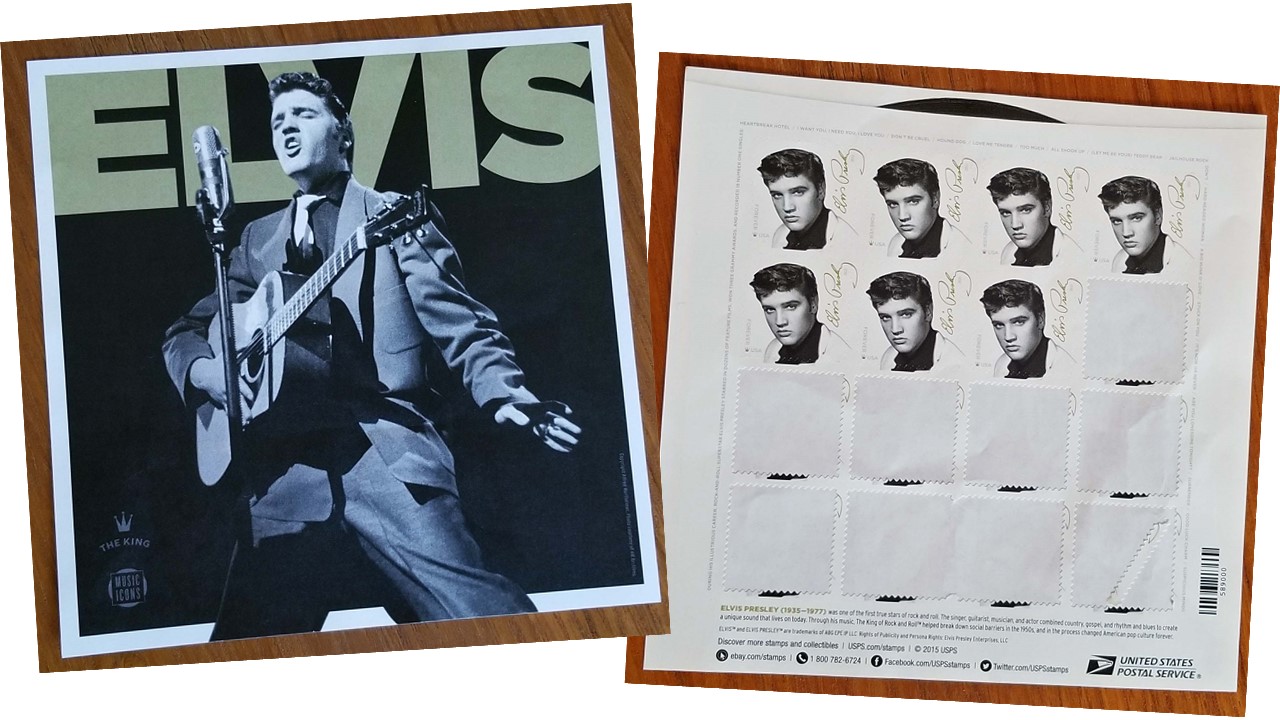
The King lives. And so does the King impersonator. Awhile back, Kari re-texted me this photo of her when she dressed as Elvis for a private party at the skating rink. Maybe someday we’ll see this picture on a stamp.
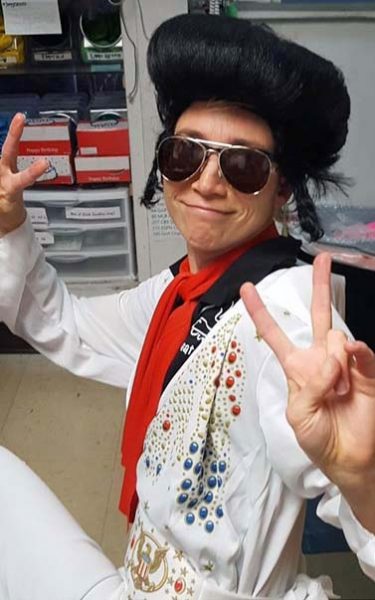

The article that accompanied this picture reminded readers that lots of people rent their houses to vacationers. It was suggested to readers that, with the contagion threat of COVID-19, people who are hesitant to travel long distances or to stay at resorts might be willing to drive twenty minutes to swim for an hour in your pool. The CDC has stated that the threat of spreading COVID-19 is very low in a properly maintained swimming pool. The news article reminds homeowners that, between guest groups, it will be necessary to clean surfaces like deck chairs, railings, and ladders, as well as any pool toys provided by the owner. It’s also important to verify whether or not your homeowners’ insurance will cover liability for paying guests.
What do you think? Shall we put our pool on the rental market?
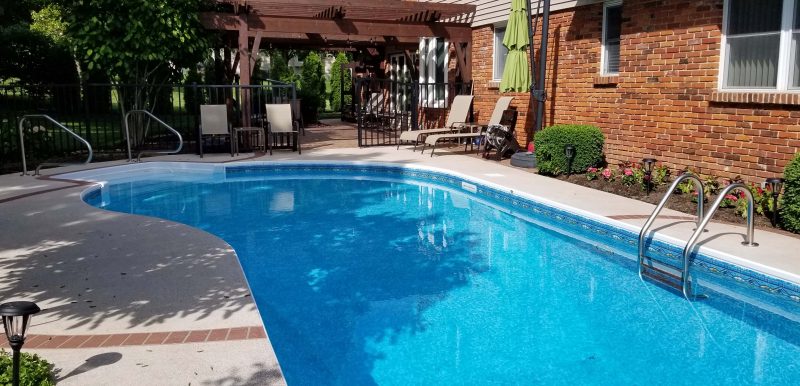
Maybe not.
I have always loved to read, and buying books is my guilty pleasure (a figure of speech because it doesn’t make me feel guilty). When I was a child, I saved my meager allowance money to buy books. I still have more than 30 of those childhood purchases–The Bobbsey Twins, Cherry Ames, Trixie Belden, and (my favorite) more–because of course, you never throw books away. (Except once. I had such an awful professor in one of my graduate literature classes that I wanted nothing to remind me of him, so I threw away the books I’d bought for his class. I mentioned that to one of the kids and the message was quickly relayed to the others: “Mom threw out books!”)

I re-read books–some of them more times than I can count. I still re-read my children’s classics every few years–Little House on the Prairie, Heidi, Little Women–and I still enjoy them. My inventory says I have somewhere around 1,700 books and I keep buying more. Over the past few months, I decided it’s time to cull the herd. Instead of choosing my favorites to read repeatedly, I vowed to choose books I rarely–if ever–select to re-read. If the premise was that all saved books were worth re-reading, I better do it for a change, right? Well, I might have enjoyed them at the time but years later, some of them have become less interesting. I’ve been donating those to Goodwill (because you never throw away books) and last week, James Michener’s The Source became the 164th book I put into the Goodwill box. It showed me how books have changed.
I didn’t have much extra money in college, so I bought thick paperbacks. They were inexpensive and took longer to read than thin books, so my money lasted longer. That spoiled my taste for quick reads and made it essential for my books to have a good plot and strong character development. The Source, like all of Michener’s books, has those qualities. Michener wrote The Source in 1965, it’s 1,088 pages long in paperback, and it only cost $1.65! Those were the days. That one took a long time to read, but I’m not going to do it again. It’s time for someone else to enjoy it.
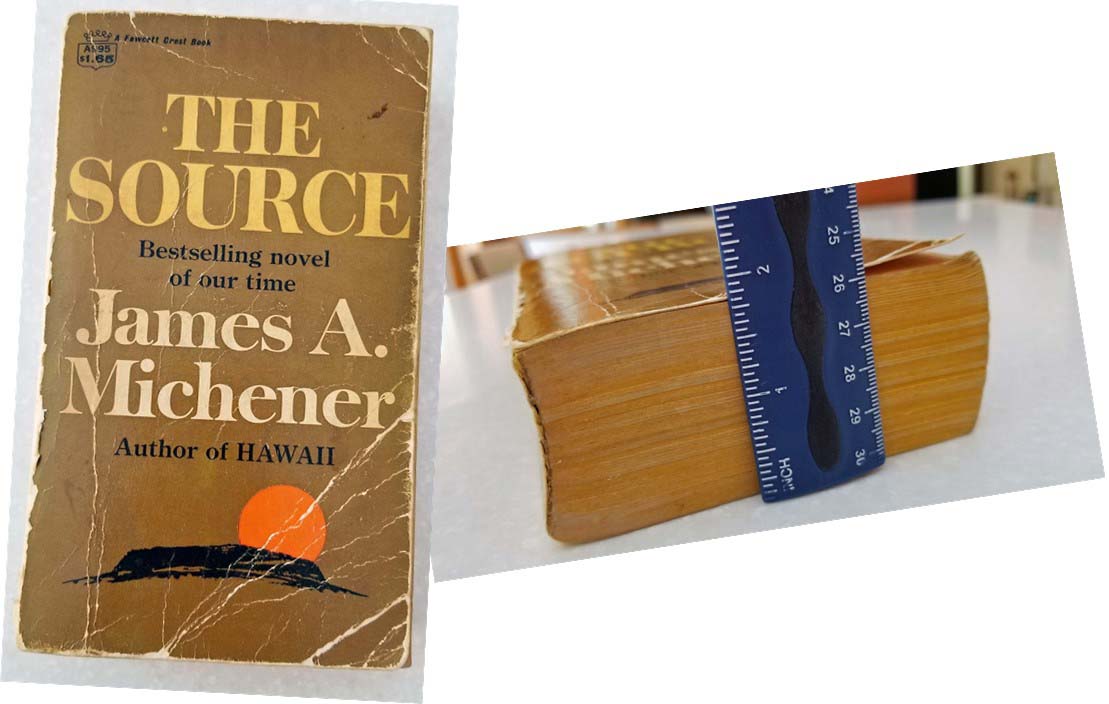

I don’t like to get too political in this blog, but serious times call for serious thoughts.
As Ted and I were driving to our polling place to vote on Tuesday, SiriusXM observed Blackout Tuesday by halting programming for three minutes of silence. The silence was preceded by a brief statement from SiriusXM CEO, Jim Meyer, who said the programming pause included “one minute to reflect on the terrible history of racism, one minute in observance of this tragic moment in time and one minute to hope for and demand a better future.”
Following the three minutes of silence, three meaningful songs were played on Channel 6–the one we were listening to. The first song was A Change Is Gonna Come by Sam Cooke. It includes a repeating chorus with the words “It’s been a long, a long time coming / But I know a change gon’ come, oh yes, it will.” The second song was If I Can Dream by Elvis. The first verse asks “If I can dream of a better land / Where all my brothers walk hand in hand / Tell me why, oh why, oh why can’t my dream come true?” The third song was Sittin’ on the Dock of the Bay by Otis Redding. The lyrics to this song express a sense of hopelessness, especially in these words: “I’m just sittin’ on the dock of the bay / Wastin’ time / Looks like nothing’s gonna change / Everything still remains the same / I can’t do what ten people tell me to do / So I guess I’ll remain the same, yes.”
Ted and I were so moved by the silence and the music that we remained silent until the DJ came back on the air in “normal” mode. We later commented that the silence and those selected songs gave us a sense of hope, a belief in the possibility of future change, and a feeling that it’s time and it’s possible for all of us to calm down and work together for the good of all.
We contrasted SiriusXM’s message to the feelings created by the words of our President, who tweeted “when the looting starts, the shooting starts” and urged mayors and governors to call for military assistance, to use “overwhelming force,” and to “dominate” in their efforts to bring order to their cities. He warned protesters in Washington, D.C. that they would face “vicious dogs and ominous weapons.” He was immediately contradicted by Washington, D.C. mayor Muriel Bowser who replied that there were no vicious dogs or ominous weapons, and was flagged by Twitter for “glorifying violence.”
Maya Angelou felt strongly about the power of words. She said “Words have the power to bring out the best, or the worst in you. To lift you up, or tear you down. With your words, you can either empower or disempower, both yourself and those with whom you share your words. And that is why it is so important to pay close attention to the words you use.”
No one in our country has a platform equal to that of our President. While our population deals with the many stresses caused by COVID-19, by the unconscionable murder of George Floyd by police officers who promised to “protect and serve,” and by the resulting protests in over 400 U.S. cities, it is, at the very least, distressing that our President chooses words to instill anger, divisiveness, and fear, rather than to call for calm, unity, and change.
I had a nice email from Thom last week, but the last line gave me pause.

This is a little late, but still true.

Today, my gas gauge told me I have a range of 47 miles. It was time to fill the tank. With the COVID-19 lockdowns, I haven’t driven very much, and my last fill-up was on March 9. I don’t think I’ve ever gone that long without refilling my gas tank.
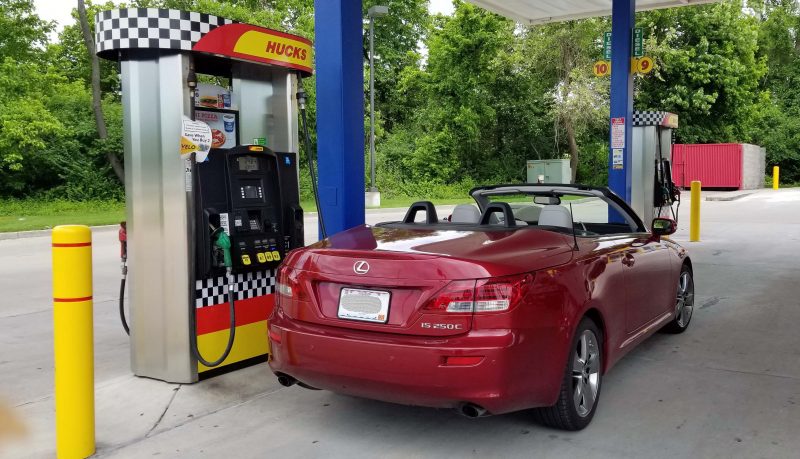
I hear a lot of weird English language errors and mutations when I watch and read news stories. The errors and mutations are so frequent, that I can’t keep track of them all, but a few recent bloopers were especially notable.
(1) There was a special news report on flying safely now that the COVID-19 lockdowns are loosening. To reassure passengers that airplane cabin air is recirculated, the reporter mentioned that “most airplanes that fly in the air now have HEPA* air filters.” Question: What would be the purpose of an airplane that doesn’t fly in the air?
*HEPA: High efficiency particulate air. These filters force air through a fine mesh to trap harmful particles such as pollen and pet dander. The workmen who refurbished our bathrooms in 2017 used a HEPA machine to filter out drywall dust while they were working.
(2) I don’t remember what the news report referred to, but Miss Ditz told us that it moves in an “anticlockwise” direction. Really? Is she too young to know we already have the word “counterclockwise” to describe this?
(3) Finally, with the riots following George Floyd’s death, the leader of our nation expressed his sympathies for “the people of Mindianapolis.” It’s somewhere in the Midwest–Indiana? Minnesota? Geography lessons needed?
I knew a lot of people must be biking when I saw the empty bicycle display at Wal-Mart, but I didn’t realize how widespread the empty bike displays are. Here are some recent headlines.



Bicycle sales in the U.S. are up 56-268 percent this spring, depending on the type of bike. Shops are out of bicycles and pre-orders will require some customers to wait until August or later for their new bikes. According to the news reports I’ve heard and read, people are getting their old bicycles out of the basement or the garage and having them tuned up to be used for exercise and as a safe mode of transportation during the COVID-19 event, so bicycle repair shops are also seeing an increase in business.
Ted and I have been riding bicycles since we were first married (complete with babies in baby seats on them), and we bought what we think is our fourth pair of new bikes last summer. We didn’t hoard toilet paper during the COVID-19 lockdown but, luckily, we’re ahead of the curve on bikes.
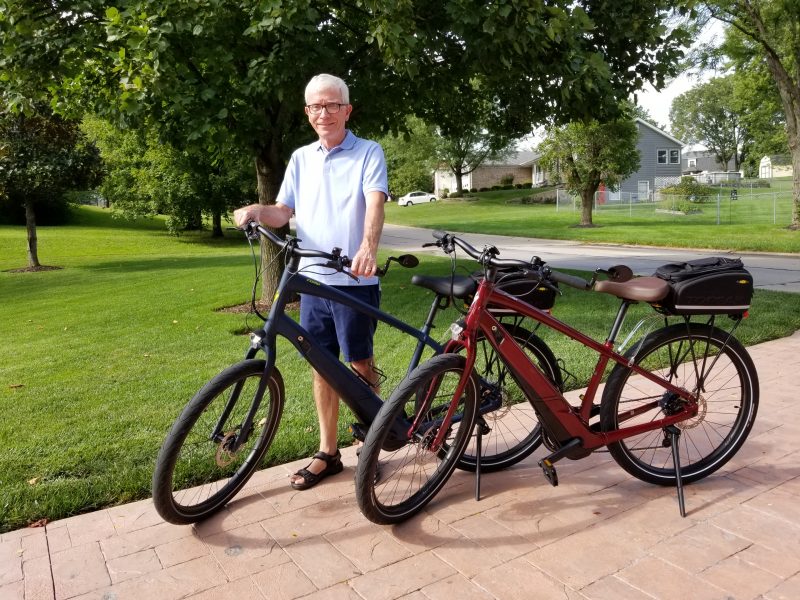
For Mother’s Day, Kathy and Annette sent me a Diamond Art kit. I have already admitted to Kathy that I was skeptical when I saw it, but I decided to give it a try. Kathy admitted that it was Annette’s idea and that she (Kathy) was skeptical about sending it too. The happy ending is that it was a lot of fun to do and I enjoyed the opportunity to spend time on a new activity. Annette, you rock!
To do Diamond Art, you use a pen-size tool (in my hand) with a hollow tip to pick up tiny little “gems” from a tray (the gray thing on the countertop) and stick them to the adhesive surface of the fabric to create a sparkling picture. The picture is pre-printed with color-coded symbols to designate which gems to use. Think of paint-by-number, only different. It sounds tedious, but it was challenging enough (this was an intermediate level kit) that I enjoyed watching the picture come to sparkling life for an hour or two at a time. (“I’ll just finish this flower before I quit.”)
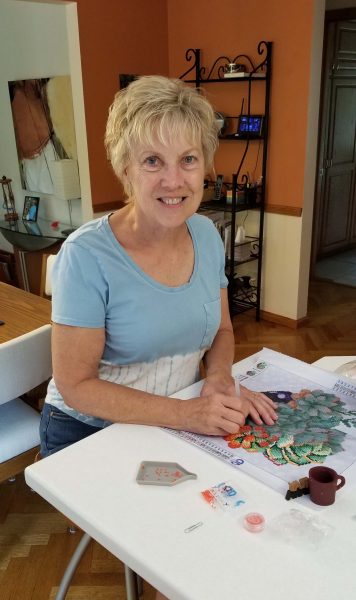
When I finished, Ted looked at it and sounded kind of surprised when he said, “It looks pretty nice.” I agreed. I don’t think I’ll hang it, and it won’t become my life’s work, but I had a good time and I think I’d like to try an advanced kit next time. Thank you, Kathy and Annette, for introducing me to a new kind of craft project.
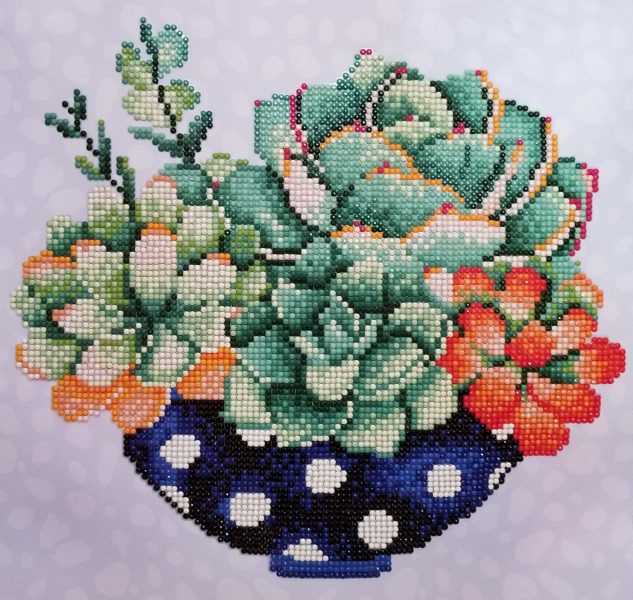
Trevor Noah’s Daily (Social Distancing) Show included a possible upcoming change in education as a result of COVID-19: the Zoomstitute teacher.

He featured six kinds of substitutes students could expect in their Zoom classrooms. There was the “always running 30 minutes late” Zoomstitute. That would be the blank square.
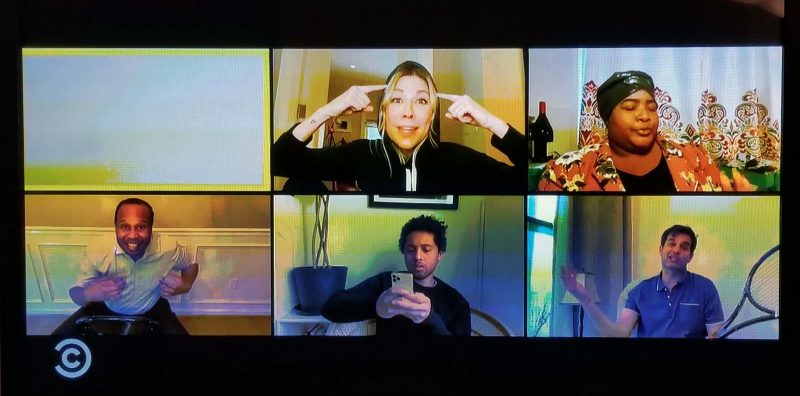
Another Zoomstitute was the substitute who’s always on his/her phone (top square). He ignored the students and when one asked, “Shouldn’t we be doing something?” he replied, “Ah, yeah, sure” and went back to his phone.
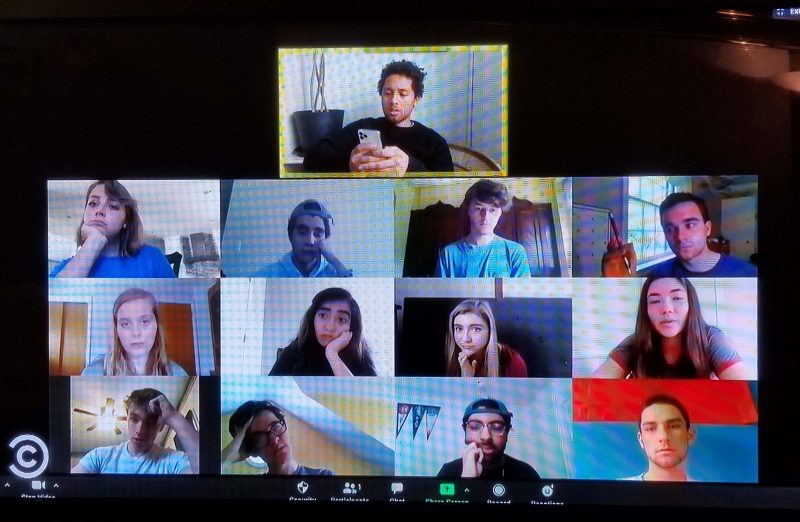
The “still living in the past” Zoomstitute talked about how he “almost” made the tennis championships, but got a cramp in his foot and had to stop playing.
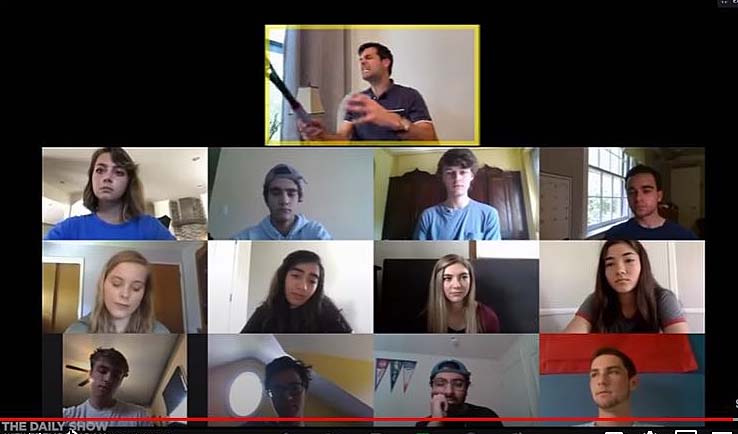
Zoomstitute. Coming soon to a classroom near you?
On Mother’s Day, we had video calls with all the kids (it didn’t work for Thom, but we tried). That was fun, and we enjoyed spending at least visual time with them. Today, for the first time in 8+ weeks, we were physically together with Kari’s family. We celebrated Teddy’s and Kari’s birthdays on their new covered porch that Dean built. We sat socially distant from each other–Ted and I on one end of the porch and Kari’s family on the other end–but it was so good to see them in person after such a long time.
Teddy’s birthday came before Kari’s, so he opened his gifts from us first. He started with the small one–two cloth pig-patterned face masks made of leftover fabric from the quilt I made for him. It’s a sign of the times that a gift of face masks wasn’t a disappointment.

The more exciting gift came next–a badminton set that was on his wish list. Teddy kept his face mask on until it was time to eat birthday cake. There was also some chocolate for our choco-holic grandson.

Then it was Kari’s turn. I made face masks for her, knitted some dishcloths (on her lap), and added a few other things, including some chocolate. Dylan is giving his full attention to the note I wrote to Kari.
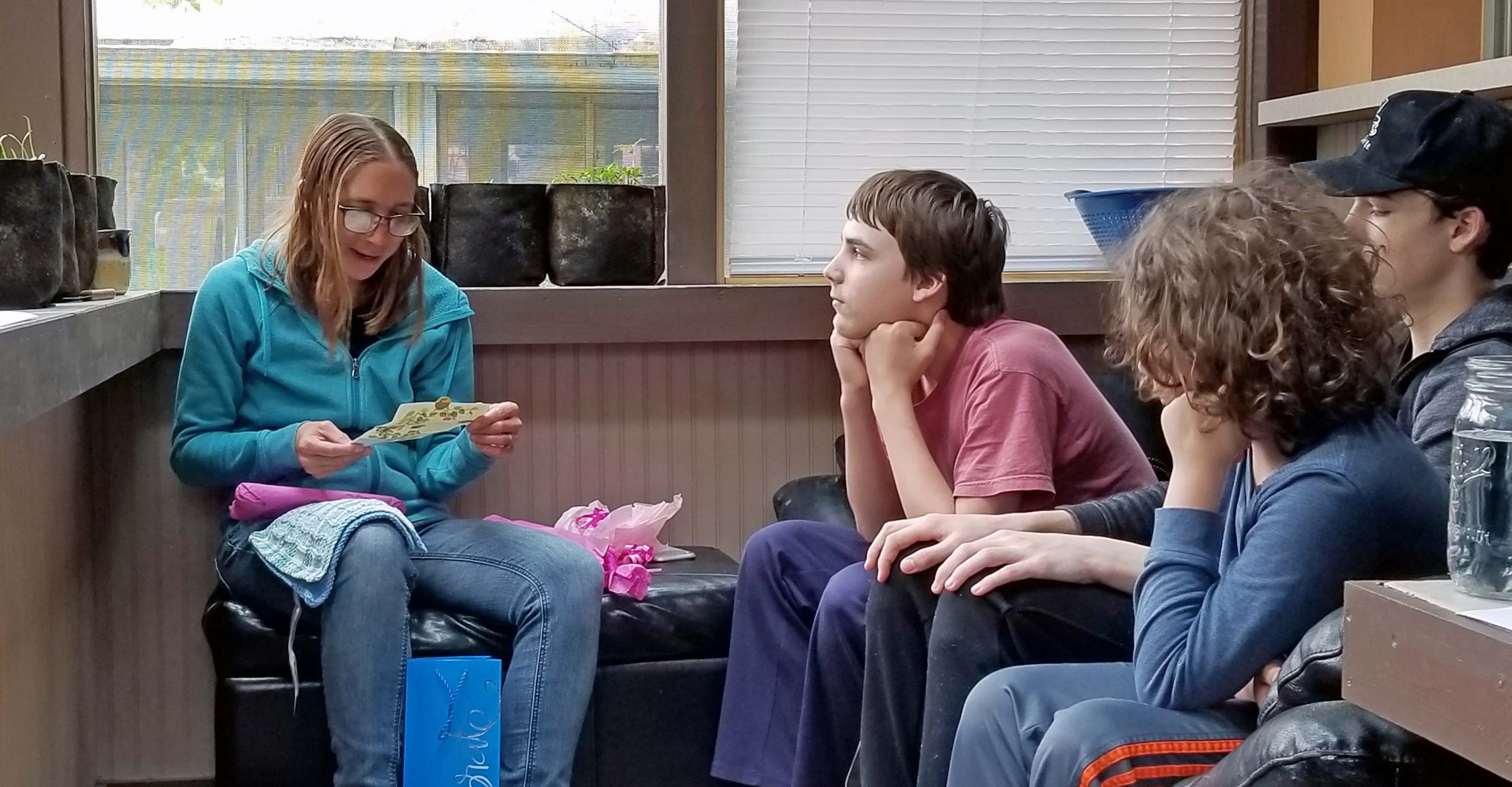
This was a birthday party, so there was cake. Teddy decorated a chocolate cake to look like a pig. He even molded chocolate pigs and applied them to the frosting. The frosting was very pink, the cake was very chocolate, and it tasted very good. You can see the cake near the top of the first picture in this post.
We had a nice long visit and Dean joined us when he came home from work. The only sad part was when Ted and I were leaving. Teddy came running out of the house to give us good-bye hugs and we had to step back. He stopped and said, “Oh, yeah.” We still can’t do hugs, and that was sad, but it was wonderful to see each other in person again. Happy birthday Dean (it was too soon to meet in person on his birthday), Kari, and Teddy.
Note: The following day, Kari sent me a text with a picture of the badminton set in action.
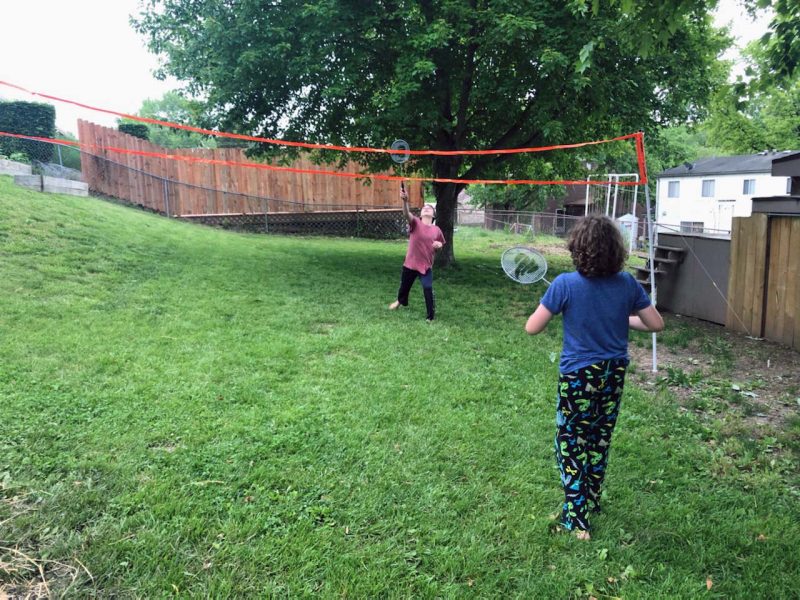
On a recent trip to Wal-Mart, I noticed that a lot of people are apparently getting outdoors to exercise during the conronavirus lockdown. The bike display was wiped out–something I’ve never seen before at Wal-Mart.
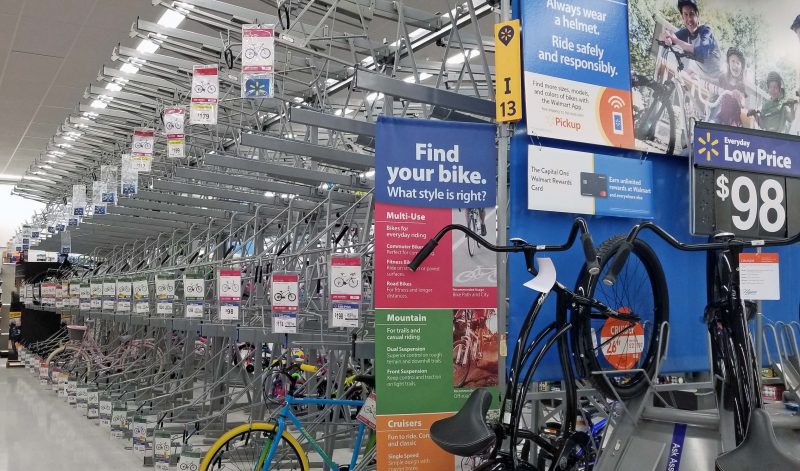
Bike gear was selling pretty well too.
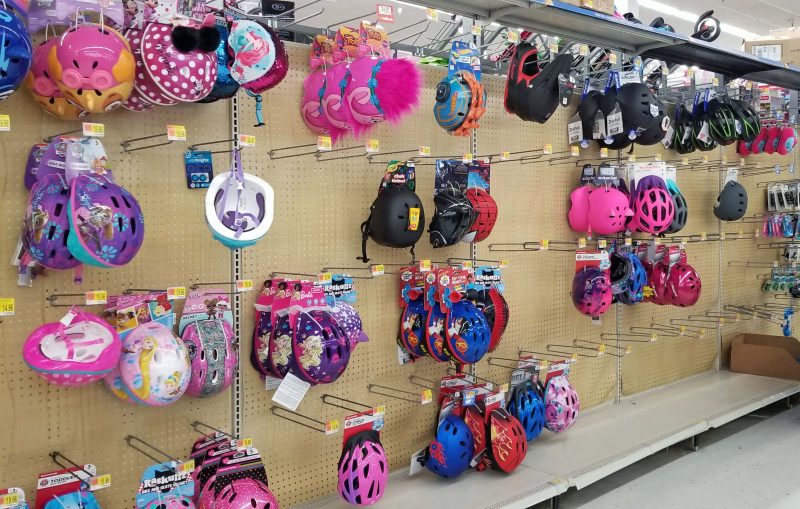
Ride on, everybody, ride on!
Since early March, I’ve put 190 miles on my bike. Not bad when I subtract the cold and/or rainy days.
Thirty years ago, on Valentine’s Day of 1990, the Voyager 1 spacecraft looked back one last time on its way out of the solar system and captured a picture of the Earth as a blurry dot in the darkness of the universe. The picture serves as a visual reminder of humanity’s vulnerability and the need for interdependence to assure our survival.
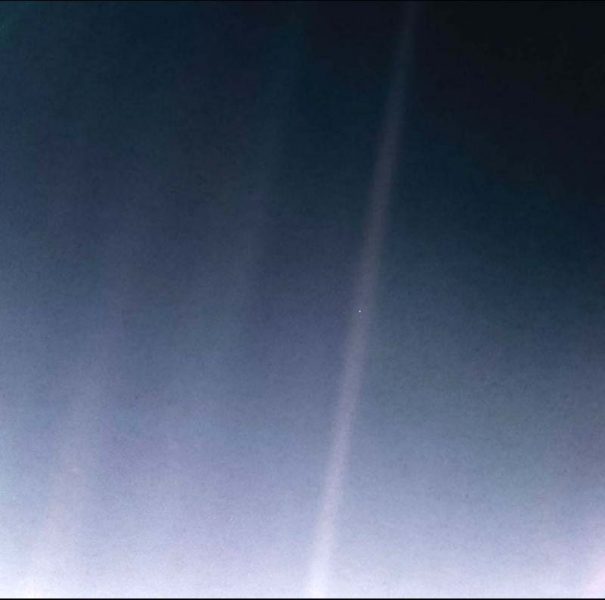
I treated myself to a bag of m&ms on a recent grocery run. Opening the bag was a visual treat. Yummy!
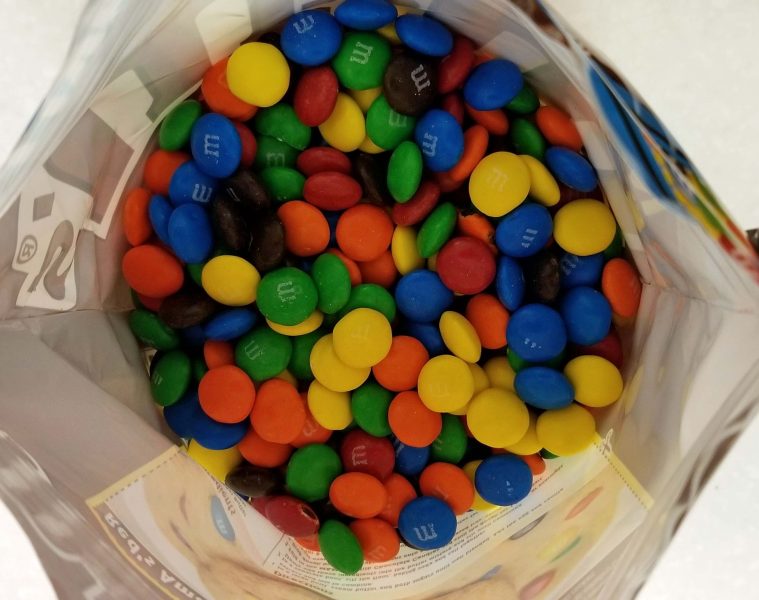
Ted and I built our firewood rack in 1980. We used treated pine, and the wood is still good, but was looking a little faded. (No surprise, since it’s probably been 20+ years since we last stained it.) A few weeks ago, I went to a lumberyard to buy stain. I wasn’t allowed inside, but the employee brought the stain and a handheld credit card machine to the door and I went home happy. The weather was warm and without rain in the forecast, so I decided to stain the firewood rack. It looks much better and fresher now.
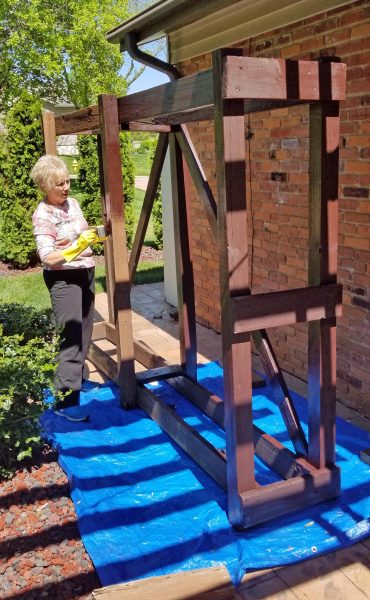
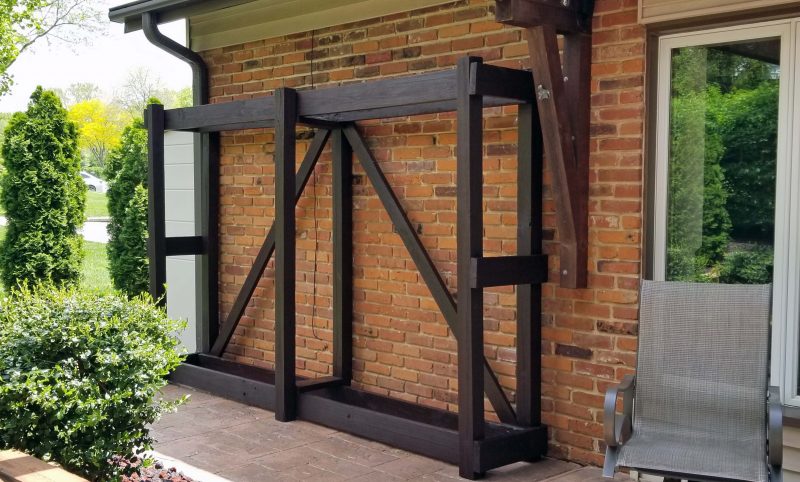
We waited a few days to allow the stain to thoroughly dry, and then Ted re-loaded our leftover winter firewood onto the rack. We’re set for another 20+ years.

We’ve lived in this house for 40+ years and I’ve always thought the steps to the upstairs seemed steeper than the steps to the basement. I chalked it up to the carpeting on the upstairs stairway, but things didn’t change when we swapped out the carpeting for hardwood. Last week, I finally decided to verify the steepness of both stairways. (It was obviously a slow day in lockdown.)
I measured everything I could think of. Both stairways have 13 steps. Both span the same horizontal distance, so the upstairs stairway wasn’t cut short to make room for the hallway and the closet beyond it. The upstairs stair treads are actually 0.75 inches deeper than the basement stairs, so it’s not an illusion of wider steps, but the upstairs risers are also 0.75 inches taller than the basement ones and the angle of ascent is seven degrees steeper, proving that the upstairs stairway is definitely steeper than the basement stairway. Why, why, why???
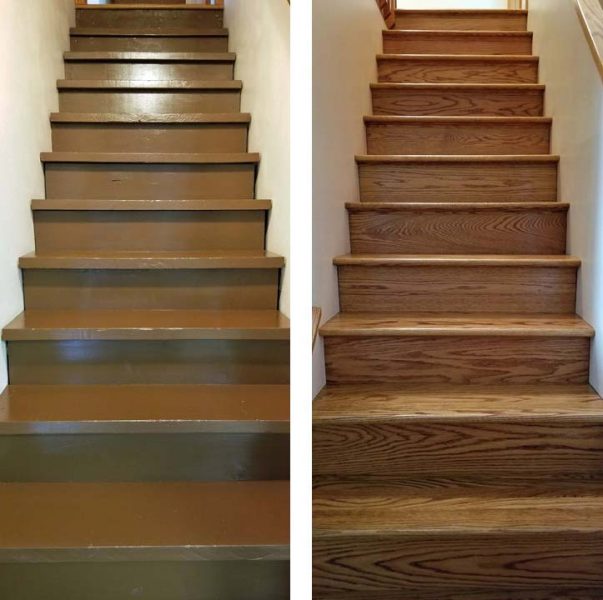
After a few seconds, I had the Eureka! moment. The basement ceiling (to the bottom of the joists, not to the dropped ceiling tiles) is 6.5 inches lower than the main floor ceiling, so the upstairs steps need to climb 6.5 more inches in the same horizontal distance. Problem solved. Now, what shall I do for the next 15 minutes?
Next question: Is this true in other houses?
I made a grocery run today–wearing my face mask, of course, and by myself because only one household member is allowed in the grocery stores. When I entered the first aisle, I thought I was back in January.
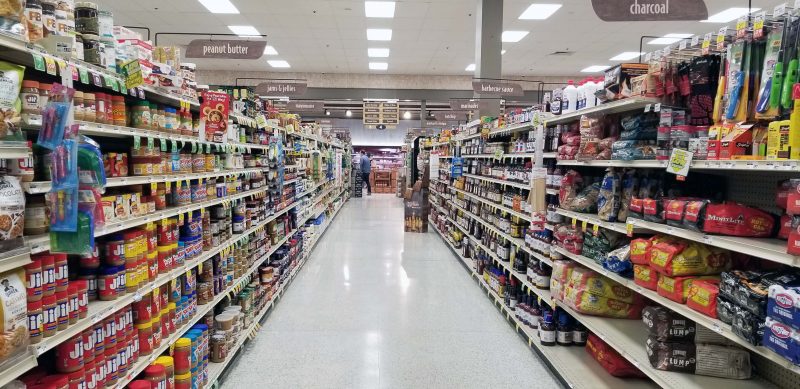
The entire store looked like this with mostly full shelves–except the aisle with toilet paper, hand sanitizers, soap, Lysol, and bleach. I think the hoarders must have their cupboards full. The latest shortage is yeast. A store employee told me they haven’t had any for a week, but are expecting some this weekend. Will I be a lucky shopper who finds yeast?
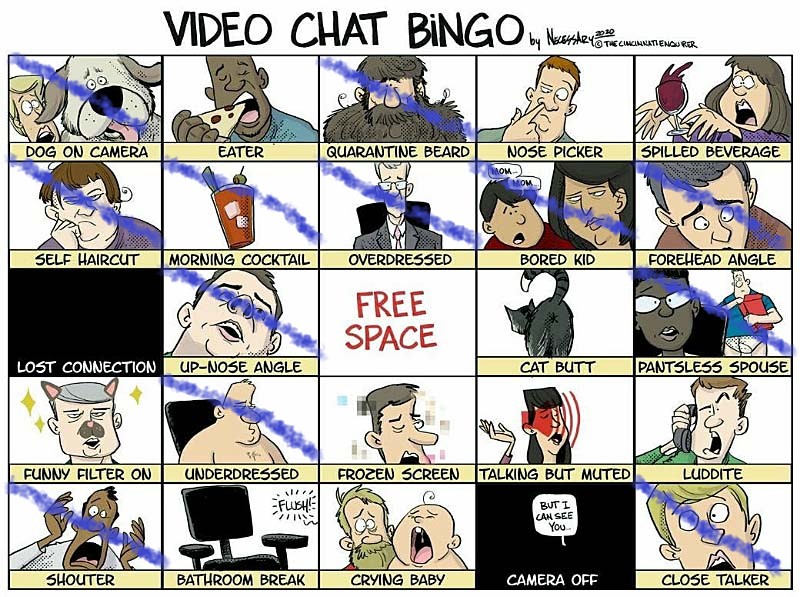
Ted and I are retired and have no need to conduct business via Zoom or other platforms, but I’ve marked the Video Chat Bingo squares representing home-based workers we’ve seen on TV. To be honest, we did not see the pantsless spouse–we exceeded that. Trevor Noah’s Daily [Social Distancing] Show shared a moment of Zen that featured a female California news reporter.
Melinda Meza, a correspondent for KCRA 3 in Sacramento was filing a live report from her bathroom, demonstrating how to give yourself a DIY lockdown haircut. She could be seen cutting her own hair while her naked husband was in the glass-doored shower and clearly visible in the mirror behind her.

* “Baby Workout”–Jackie Wilson
Ted and I have been working out in our home gym for several hours each week. Stay strong. Stay healthy.
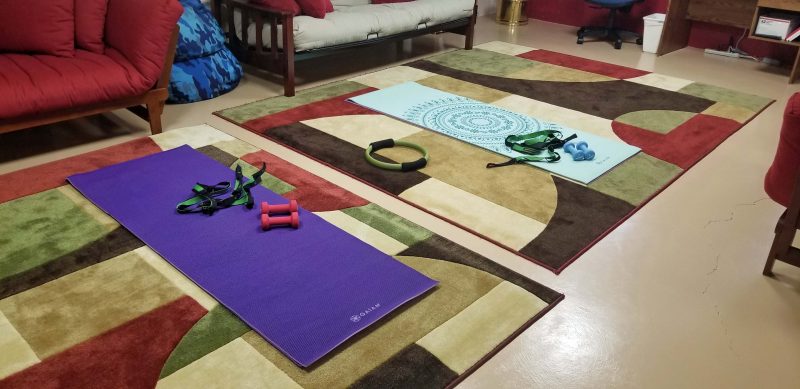
I’m so glad I worked in education and not in big business. Today, I had to deal with the corporate sector, something I always dread.
Last week, I received an email from our gas company informing me that they are changing to a different computer system. To continue my autopay payments, I was instructed to go into my gas company account, unenroll from autopay, then re-enroll in it so that my account will be switched to the new system. What a pain, but ok, I went into my account to do that, but I was unable to re-enroll. Error message: We were unable to enroll your account in paperless billing at this time. Please try again later. I did. Same result.
I called to speak with a live person and was told to call back during regular business hours–which were not specified. Before calling back the next day, I tried to set up an account myself once more. Still no luck after 20 minutes. I was becoming frustrated, so Ted suggested I try scr** you as a password to see if that works. I tried calling again instead.
Luckily, early afternoon apparently falls within the regular (but unspecified) business hours, and I was able to speak with Keith. According to him, there is no record of my autopay account in the company’s system. Since I’ve been using autopay for years and have not had the gas shut off, I find it hard to believe that there is no record of my account. Keith, however, insisted it doesn’t exist in the records and advised me to set up a new account. I tried, but I couldn’t get past the “enter your password” screen.
Switch to Rob. Rob informed me that he is working from home, sitting on the sofa in his pjs beside his wife and petting his cat. (Professional? I think not.) Rob told me I’m having trouble because there’s a dot in the first part of my email address and the system doesn’t recognize that format. I’ve been getting emails from the gas company at that address for years, but . . . . After working with me for a few minutes, Rob decided to contact an IT specialist, so he put me on hold while he sent a message. The voice on the wait-time recording asked, “Have you signed up for paperless billing? It’s easy! Just go to Spire.com to see how effortless this is.” We English majors call this “irony.”
For twenty-five minutes, while Rob and I–and his wife and cat–waited to hear back from the IT guy, Rob and I chatted about places we’ve been and how good the beignets are at Cafe du Monde in New Orleans. His wife and I both played clarinet in school, yet she never heard of Pete Fountain, a reknowned Dixieland clarinetist. After more trivial exchanges, the IT guy finally sent Rob a message saying he had set up the account for me and there was nothing else I needed to do. If my May gas bill gets paid automatically, he’s right.
This process was so “easy” and so “effortless,” it only took 45 minutes of unsuccessful attempts on my part and a little more than an hour of phone time with Keith and Rob to set this up! Aaaarrrrgggghhhh!
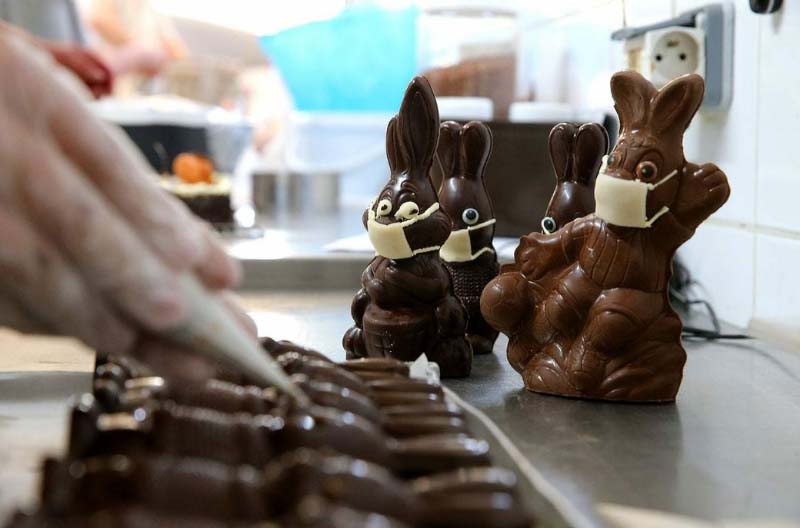
This is my dad/Grandpa Pete. I don’t remember the hat and I can’t tell what the pin says. I can’t even remember Dad ever wearing a cowboy-style hat, but pictures don’t lie. Or they didn’t in 1979.
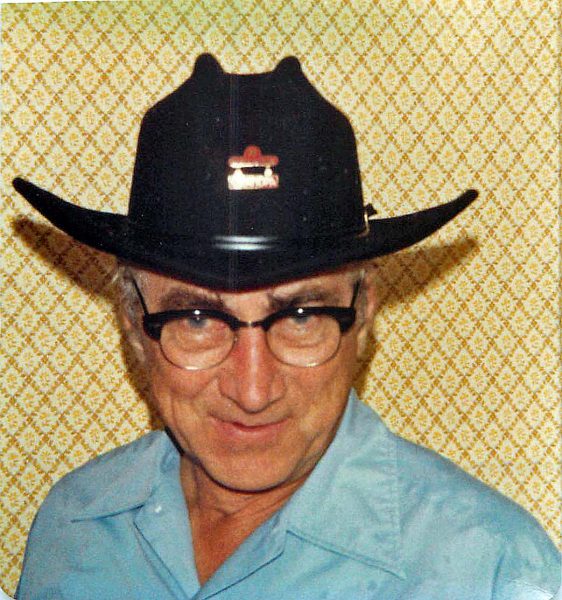
Sticking with the 1979 cowboy theme, this is Ted’s Aunt Verna, his brother Gary, and his mom on our new front porch. (We moved into this house in July 1979.) I don’t remember Gary’s cowboy phase either, but it looks like Sheriff Brett Maverick has come to visit. Maybe he went shopping with my dad.

When we bought a bike for Jeff, he didn’t want to practice riding it. He told me he didn’t see any point in practicing, since all the kids who were six already knew how to ride. His plan was to wait until he was six and then get on his bike and go. It wasn’t easy to convince him that the six-year-olds could ride their bikes because they had practiced. He’s seven in this picture trying out his new, larger bike, and it looks like he’s happy to have mastered that skill.
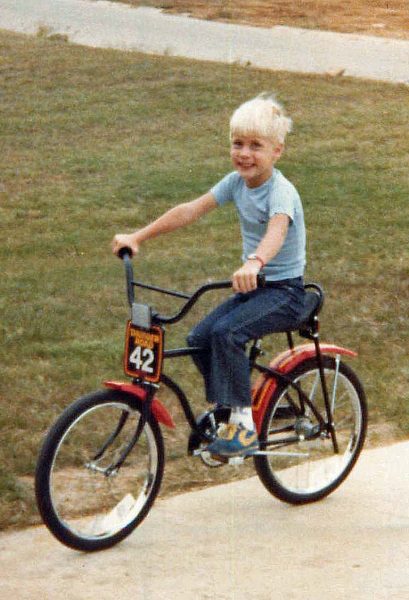
This is Kathy in first grade. If I remember correctly, her class did a unit about Native Americans and she made this costume.
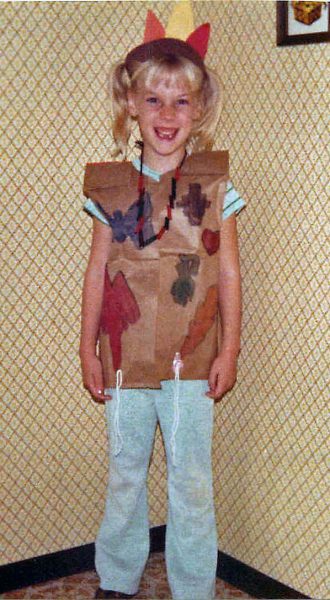
Thom (Tommy in 1979) is three years old and already in love with trucks. His career goal for many years was to drive an 18-wheeler, and he could recognize semi cabs from behind, as in “Well, only a Kenworth has a smokestack like that.”
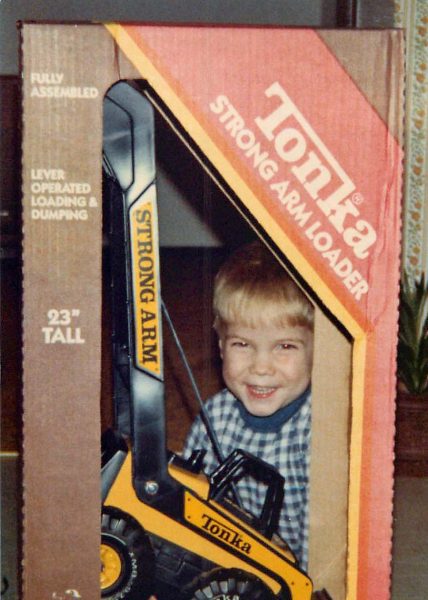
Here’s one-year-old Kari with her Christmas doll, Kelly. Kelly came with her fluffy elephant friend named Elly.
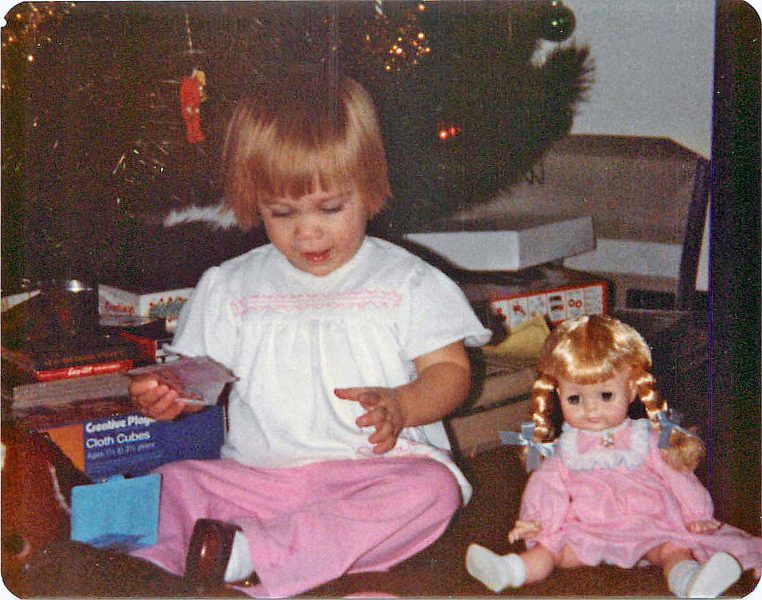
It’s July 1979 and it’s hot outside. The building on the left is a day care center. Our house was the first residence built in this plat of the subdivision. See the swimming pool complex in the background? This picture must have been taken within the first two weeks of moving to our new house, because Ted and Jeff walked to the pool to buy a membership for us a few days after we moved in. After that, we didn’t use this backyard swimming pool. With nothing between us and the pool complex, we could sit in our back yard and hear the music blasting out of the concession stand to the accompaniment of the twang! of the diving board.
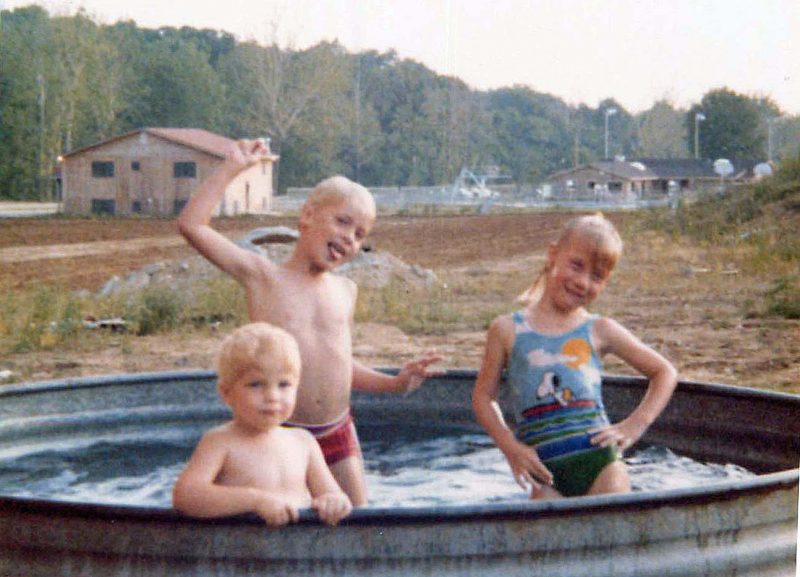
I think this must be the picture we sent with our Christmas cards in 1979. Check out Tommy’s colorful belt. All my life, I wanted to learn to play the piano. My early career goal was to play like Liberace (I watched his TV show every week), but my parents never had a piano. Ted bought this one for me for Valentine’s day in 1974 and I took piano lessons for five years. During that time, Thom and Kari were born and my practice time disappeared. That’s a 60-inch long console stereo against the far wall in the dining room. After a bedroom set and a kitchen table and chairs, that was the first piece of furniture Ted and I bought after we got married. It had a spindle that held six LP records, an AM-FM radio, and a tape deck to hold Ted’s reel-to-reel tape recorder to play tapes. And all in stereo sound!
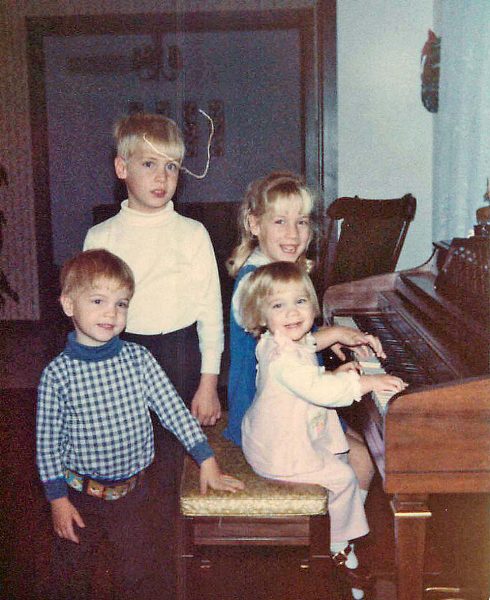
Do you think the shipping community is running out of small boxes? FedEx left this box at our door. The box is a 13-inch cube, so it has 1,728 cubic inches of space inside.
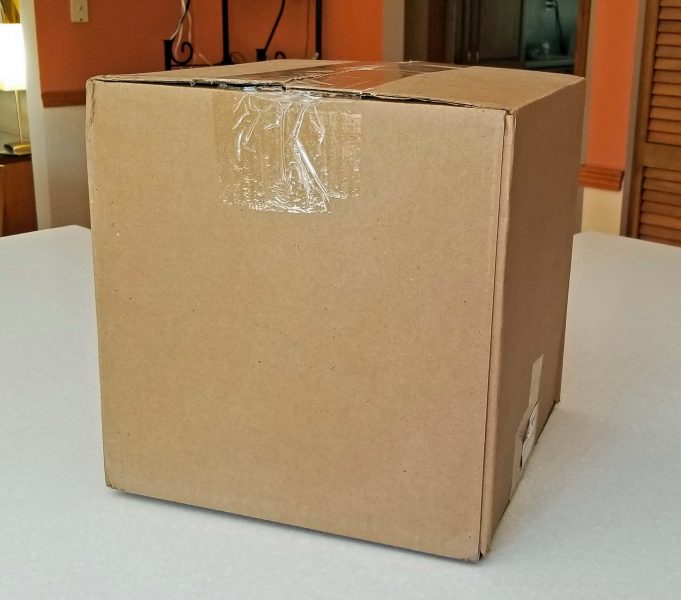
This is what was inside the box–two small boxes that were 4 x 3 x 3 inches each for a total of 72 cubic inches. No filler material included. I hope we didn’t have to pay shipping for the extra 1,656 cubic inches of air inside.

The CDC has changed its mind and suggested that we all wear masks to provide some level of protection from COVID-19. A kerchief or homemade mask is fine (a few weeks ago, it was deemed useless), but we should save the truly protective masks for the medical professionals.
Today I went to Joann Fabrics to buy the makings for some masks. This was the line.
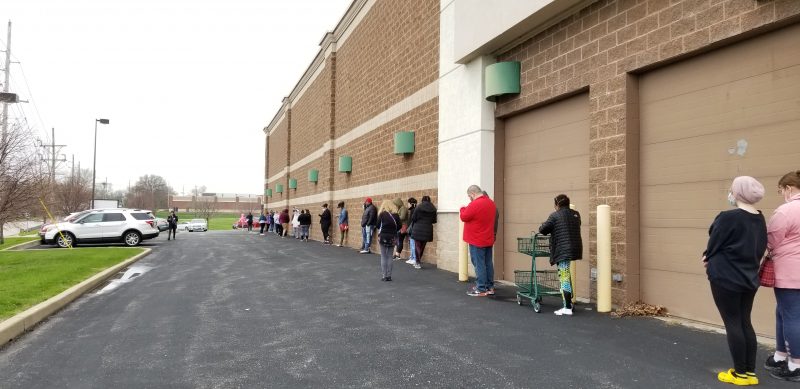
I was at the end of the line when I took the picture, and more people kept coming. After I’d stood in the cold 40-degree weather (wind chill in the low 30s), for about 25 minutes, an employee walked the line to inform us that (1) anyone who arrived after 2:00 p.m. (I arrived at 1:55) was not guaranteed to get into the store before closing at 4:00 p.m.; (2) they were out of fusible interfacing; and (3) there is no elastic in the store or online. At that point, several people (including me) left, so some of those who came after me could probably expect to get inside before closing.
I went to Wal-Mart and, even though they were admitting a limited number of customers, I walked right in. At least 3/4 of the shoppers were wearing face masks. I felt so unprotected!
So many people were buying fabric that the lady working the paint counter had a cutting mat at her station and was cutting fabric over there. I bought fabric and interfacing (there wasn’t much interfacing left), but was told there is no elastic in any store right now. I have several yards of elastic at home, but I bought some wide rubber bands in case I need more.

When I got home, I started making masks. Ted and I are now either protected or not, depending on what the CDC’s latest update is on the efficacy of homemade face masks.
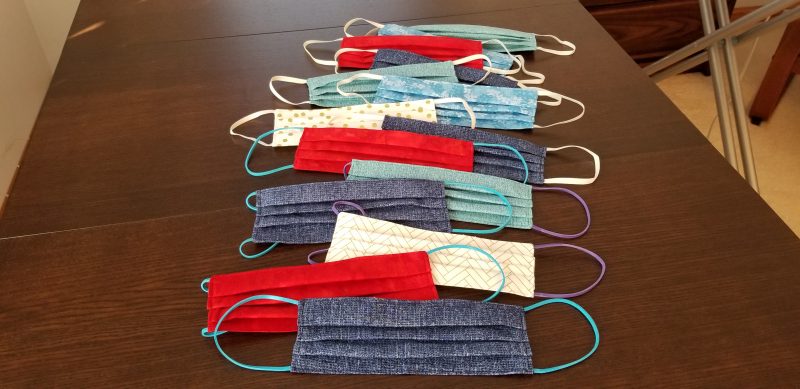
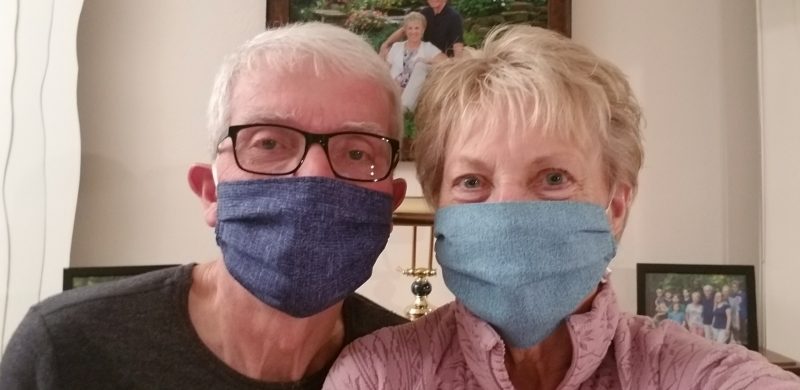
Gerry Hofstetter is a light artist who is projecting images of support and hope on the Matterhorn during the coronavirus crisis.
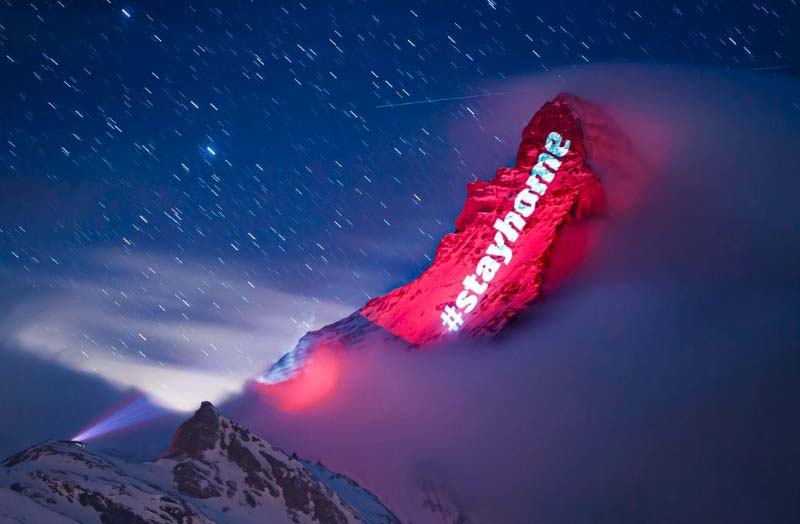
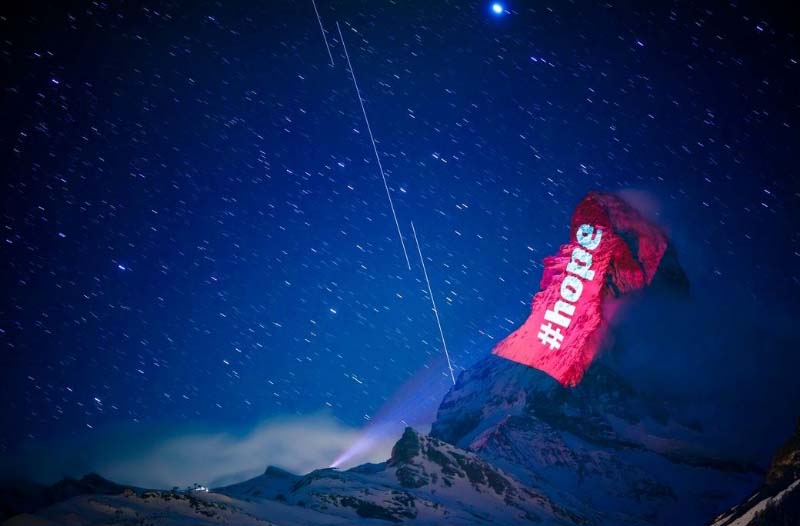
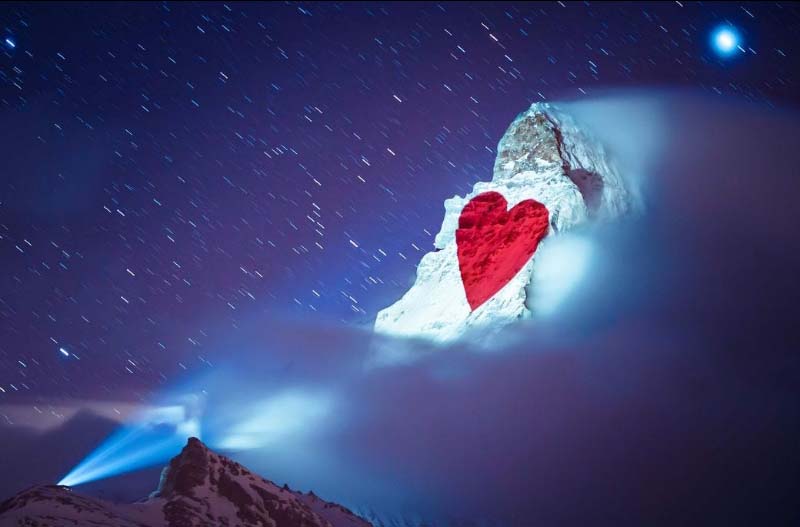
This picture shows the city of Zermatt, Switzerland. The hotel where we stayed last summer is just out of sight at the lower right of the picture.

I was looking for a particular photo that I wanted to print, but I couldn’t find it, so I started opening folders I thought I might have moved it to. I never found that specific photo, but I found an interesting folder. Here are some of the pictures from that folder.
This is the most boring one to look at, but it was fun to read.

I think I took this picture in LaCrosse, WI. Ted and I were taking a walk after checking into our hotel and, when I saw this, I thought of Shel Silverstein’s book Where the Sidewalk Ends. This is the place.

Here’s some grocery store art I saw several years ago. Obviously, during the Christmas season. Construction materials: Pepsi, Coke, and Sprite cases.
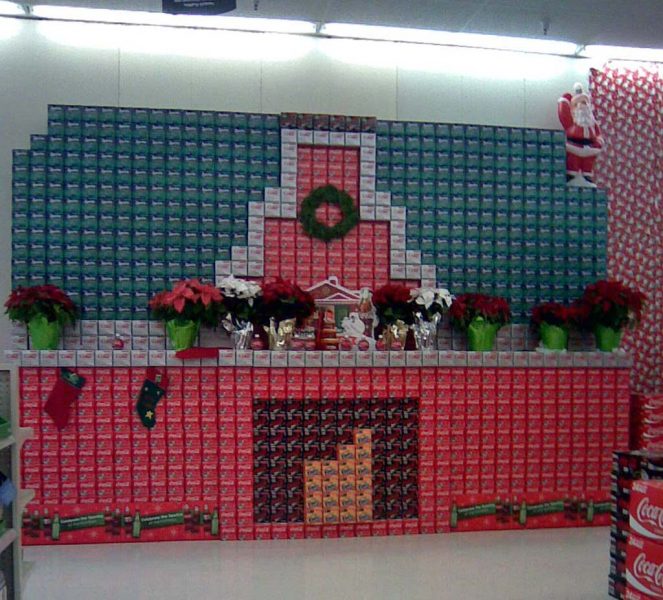
I found this cartoon.
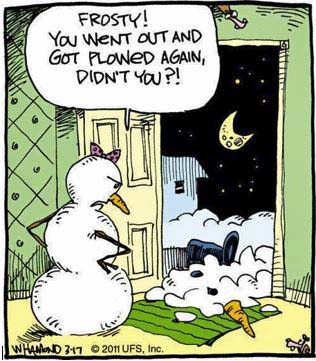
One of my teachers had this clock in her classroom.
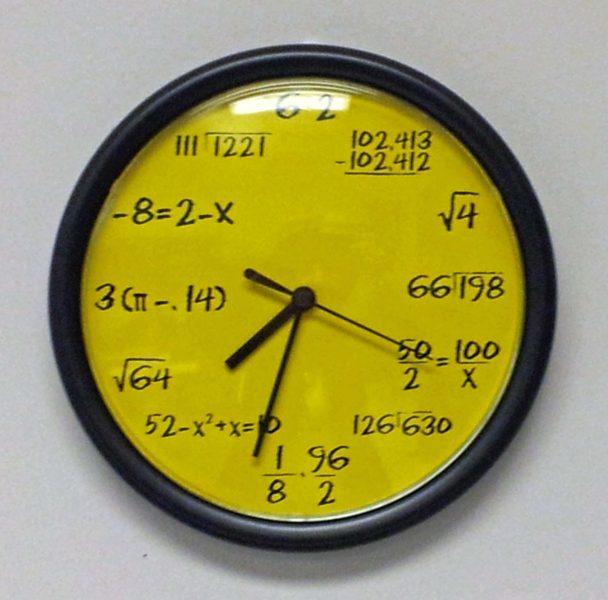
My class site at Pike-Lincoln Technical Center in Eolia had a major fire in 2012. While I was helping my teacher inventory what was left of her classroom, she showed me this. She had a a bunch of red rulers rubber-banded together in a file drawer and they melted down to form this sculpture, which she told me she was going to save as a memento of the fire.
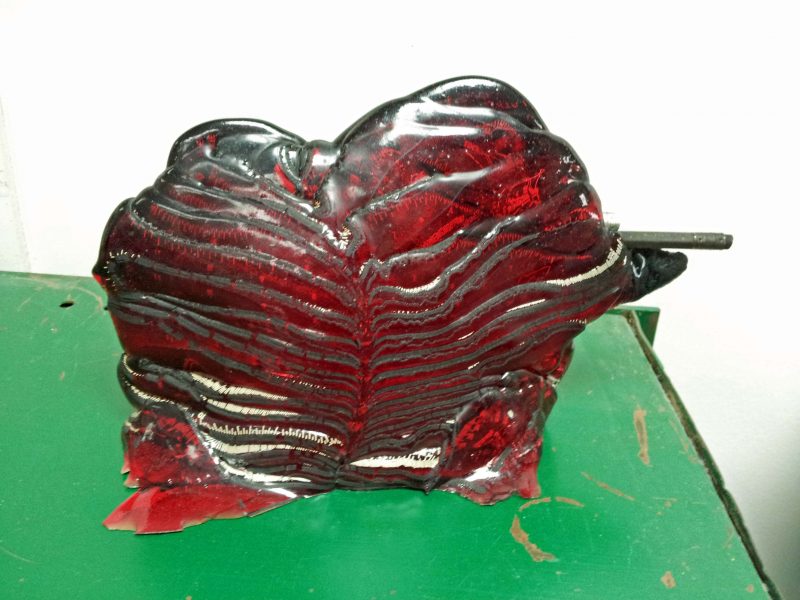
The pile of rulers was lying on its side on the bottom of the drawer and against one side of the drawer, so two sides of the “sculpture” are flat. The large flat side (back of the sculpture) shows the rubber band that survived on the bottom of the pile (you can see where it was in the picture above). It also shows that the melted plastic ran over a pencil and a ball point pen. The markings on the rulers are visible in both pictures. Cool!

This picture was taken at Christmas 2005. The kids were here for my doctoral graduation and someone (probably Kathy or me) gave Thom a Beethoven figure. Kathy and I thought it would be fun to let Beethoven play his “Moonlight Sonata” so we set up this photo op. I still smile when I see it. Maybe Kathy does too. (Remember phone books?)
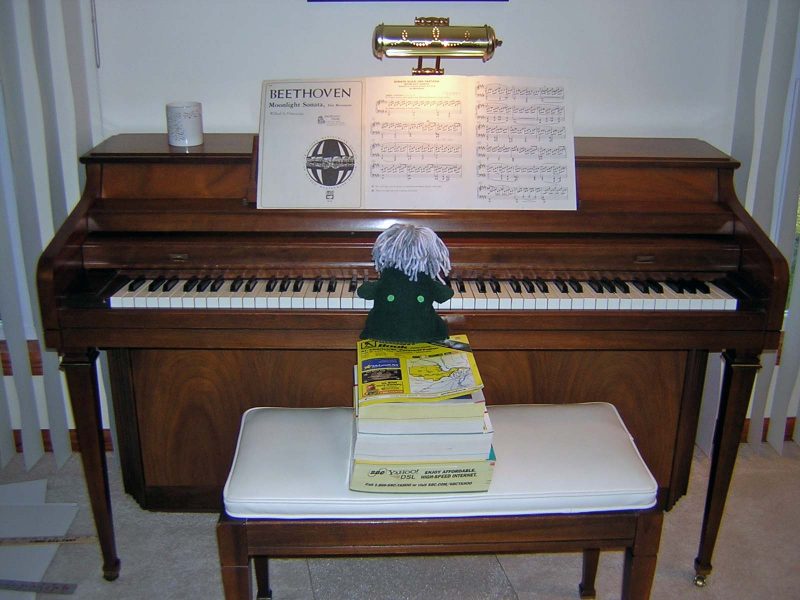
Continuing the Beethoven theme, I saved another cartoon.
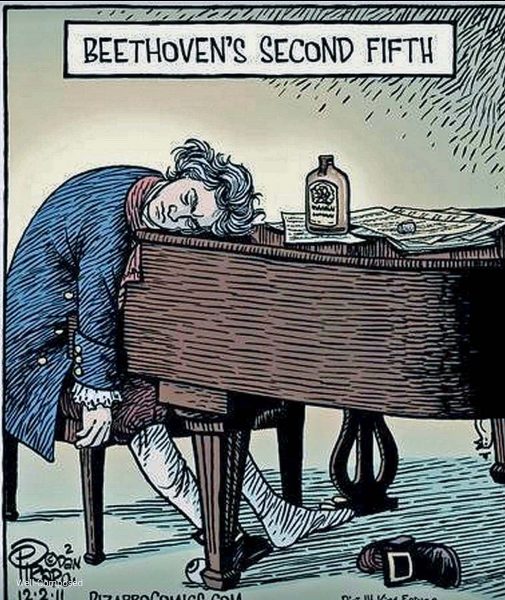
When Ted and I (and Jeff and Kathy) moved to Missouri in 1973, Ted’s office was at Lambert Airport. We bought a house in St. Charles rather than closer to the airport because we knew the STL WSFO (St. Louis Weather Service Forecast Office) was already under construction in St. Peters, a few miles west of St. Charles. At that time, St. Charles was basically a bedroom community for McDonnell-Douglas and St. Charles County was rural, with nothing but farmland and very small towns west of MO Hwy 94. It looked like the pictures below. When the St. Peters WSFO opened in 1974, Ted climbed the radar tower and took pictures of the Cave Springs area around the office.
This photo looks to the northwest. The horizontal road near the horizon (barely visible) is I-70; the diagonal road going to the left side of the photo is Jungermann Road. We moved from St. Charles to St. Peters in 1979 and it was still several years before I met more than two or three cars driving between home and Cave Springs on the two-lane Jungermann Road. Now it’s a 5-lane road and has constantly heavy traffic.
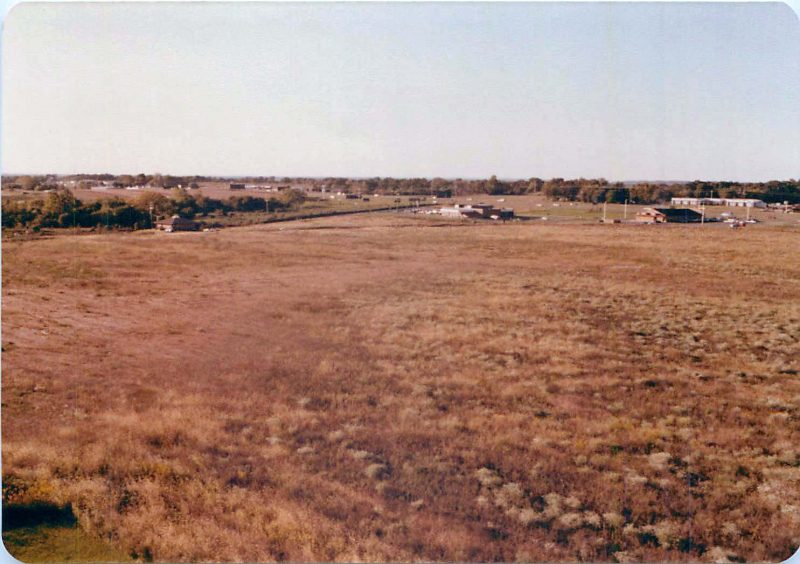
This view faces northeast. In the right center, the black-and-white striped Venture store sign is visible. When Venture was built, it was “out in the country” about six miles west of our house and there were no city lights past MO Hwy 94–just the darkness of rural Missouri. The city lights now extend westward without a break past Warrenton, 32 miles west of MO Hwy 94. In the right foreground, you can see the shadow of the radar tower where Ted is standing with his trusty Pentax camera that he bought in Japan. The WSFO moved from Cave Springs to Weldon Spring in 1993 when it upgraded to Doppler radar.
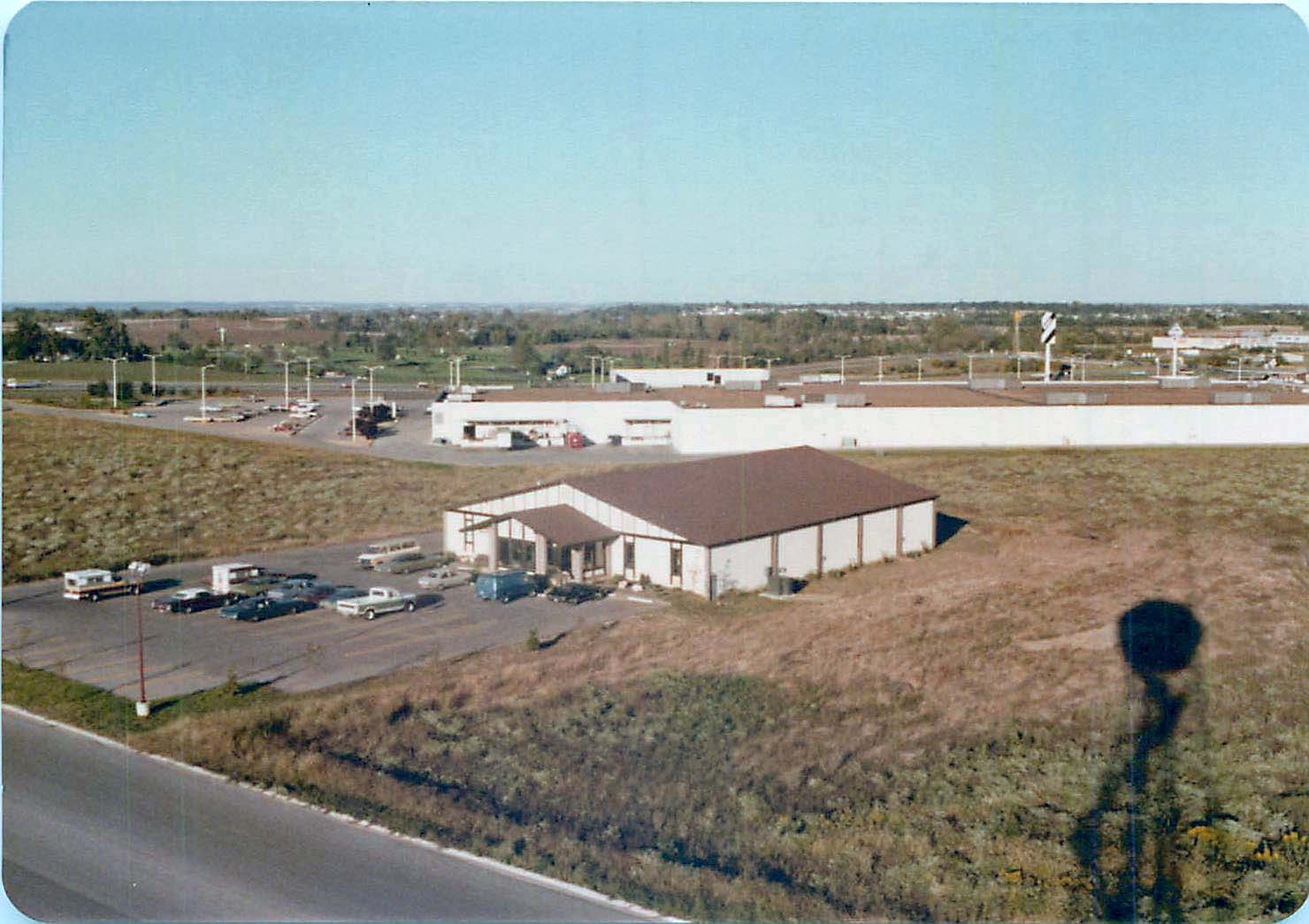
Here, Ted is facing southeast. When we decided to buy a larger house in 1979, we looked at one in the subdivision visible in the picture. The large building on the left is Cave Springs Lanes. The road running from the left side of the picture toward the lower right corner is Mexico Road. It was a gravel road when the WSFO opened. It’s a five-lane main arterial road now (and paved), and has been for a very long time. Cave Springs used to be described as having three main commercial buildings: The WSFO, the Venture store, and the bowling lanes. Now it’s a major commercial area, offering just about anything you might need. The WSFO building is currently being used by a department of the St. Peters city government. The Venture store was razed, and the site now houses a strip mall with an Office Depot, Northern Freight, Hobby Lobby, and some smaller stores. The bowling ally is still open for business.
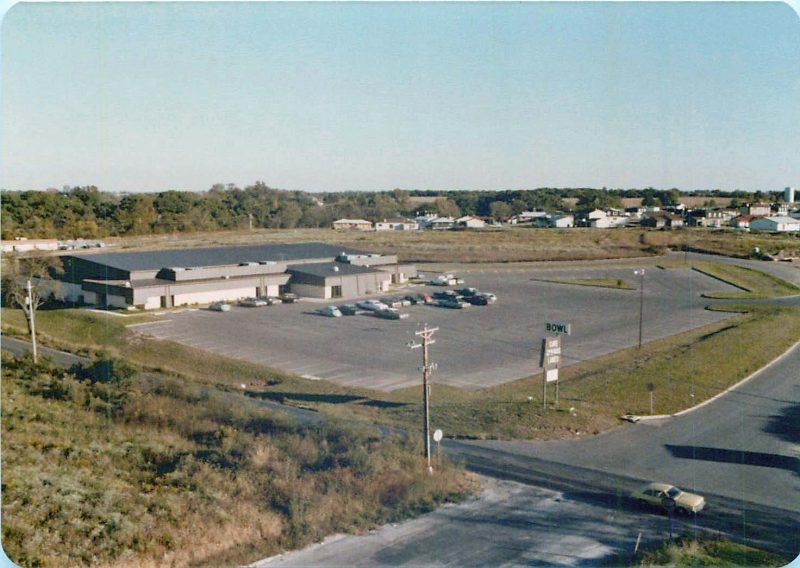
The last photo from today’s search was a mystery to me for a few seconds. I’ll give you a moment to look at it and I’ll describe it below.
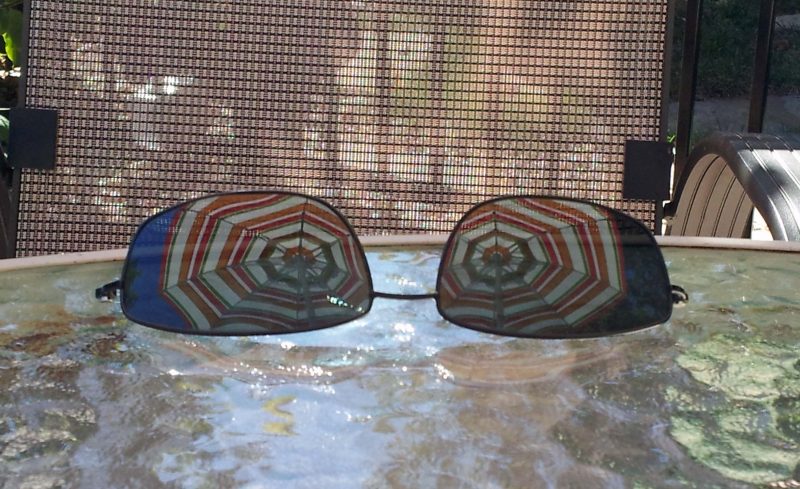
Those are my sunglasses lying on the poolside picnic table with a lawn chair behind them. They are reflecting the umbrella over the table.
So far, the extra free time I’m finding with the COVID-19 lockdown is still fun.
We scored today at Wal-Mart.
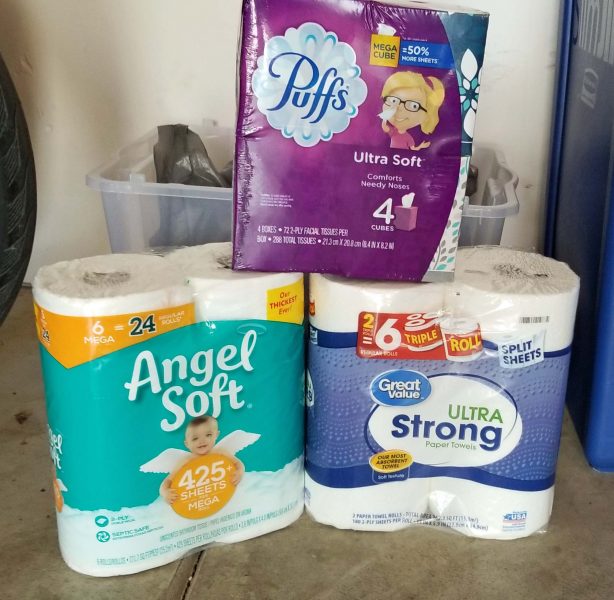
There was a limit of one each, but it wasn’t clear if a package of one roll of paper towels and a package of six rolls of paper towels were equally counted as one item. A small-size package of each item was sufficient for us.
P.S. I saw an article yesterday that many stores are already notifying customers that they will not give credit for critical items purchased during the COVID 19 crisis period. Those hoarders will be well-supplied with toilet paper and hand sanitizers for awhile.

Speaking of misleading health information, Barbara Delinsky has a gem in her book Sweet Salt Air. A woman in the story asks an overworked man, “When do you sleep?”
“When I’m tired,” he replies.
“Studies show that the less sleep you get, the greater your chance of stroke,” she warns.
“Studies get it backward,” he counters. “Insomnia is caused by stress, which causes high blood pressure, which causes stroke. I’m not stressed.”
This is another example of health information that “everyone knows,” but it’s not completely accurate. Even though a large percentage of people who have strokes might also have insomnia, the relationship between the two conditions is a correlation, not a cause-and-effect finding. The same is true of the studies that report people with more education have more migraine headaches. Education does not cause migraines, but it can provide a pathway to more stressful jobs, and stress causes migraines.
One of my great and useful take-aways from grad school was learning to be aware of the difference between correlation and cause-and-effect. All that tuition money wasn’t wasted.
